Construction of a drawing of the basis of trousers. Plus size trousers - mission accomplished
Hi all!
Today I want to show you pattern making women's trousers tapered to the bottom line. Otherwise honestly, I haven’t designed so many dresses for a long time... Under New Year a lot of orders!
The model I chose was quite interesting, and not just a classic. Of course, there is nothing pompous about it, but the style is visible quite confidently. These trousers will look harmonious with almost any top: blouse, top, sweater or blazer.
However, remember that this cut does not suit everyone. For example, I can’t afford it... But for my readers I’ll show you how to make a trouser pattern using the following model:
It's beautiful isn't it? This is absolutely new model, which is very relevant in the winter-spring season of 2013! As soon as I saw the new product in quelle, I hastened to share it with you... By the way, the price of such trousers is simply incredible, as much as 2799 rubles! And you and I will meet 1/3 of this amount, right? 🙂
And here it is closer:
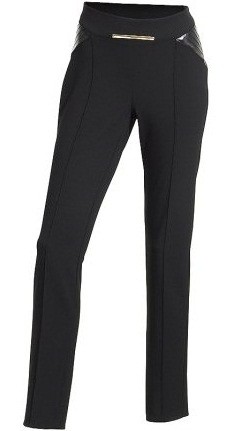
The pattern of tapered trousers has several distinctive features:
- trouser length to ankle;
- tapered cut;
- instead of arrows, we will design tucks - this is much more practical;
- side inserts - perhaps these are pockets :) I decided not to make them...;
- slightly lowered waistline along the front half.
As you can see, there will be nothing complicated in the construction. Therefore, we stop being afraid and move on to modeling!
A small addition before starting to create a pattern for women's trousers. They're coming holidays, and you don’t have time to sew a new dress? will save you online dress store ! Exclusive cocktail dresses from Roberto Cavalli for any special evening in your life.
Well, now let's get back to the trousers...
Constructing a pattern of women's trousers tapered to the bottom
First, we need a basic trousers pattern for women that we created.
Wow! I just now realized that I based the tapered trousers pattern on a completely different basis... And only now I noticed the difference! But it's okay! You can model using the same principle. The differences are minimal...
But I’ll make a reservation right away. For building basic pattern We took quite large increases in trousers. This model is designed for a tight fit. Therefore, either you will have to redraw the trouser pattern with smaller increases, or take away a little extra when sewing in the side seam. After all, in fact, there will be quite a bit of excess...
We will start constructing a pattern for women's trousers from the front half.
- Let's set the length of the trousers, which, as always, I forgot to mention in the video tutorial! :(... By the way, we set the length of the trousers along the front half along the line of the arrows (middle line)
- then we will create a slightly lowered waistline on the front half. From the extreme right point of the waist of the front half, put 1-3 cm down. Connect new line waist with the “arc” command.
- We will make a belt on both the front and back halves, the width of which is from 3 to 4 cm. Then you need to separate the belt from the trousers and close the darts on it.
- Let's build a side insert. From the left point of the waist down along the side seam 10-15 cm, and along the waist line 8-12 cm. Connect with a straight line.
- Let's make arrow tucks. From the center line of the trousers, 0.5 cm to the right and left. As a result, we get a tuck equal to 1 cm.
- Now let's decide on the width of the trouser leg along the knee line. For this we need the girth of the knee. In the video tutorial I will show you how to take this measurement and how to calculate it for a pattern.
- The same goes for the width along the bottom line...
After these steps, you will have a ready-made pattern for tapered trousers: 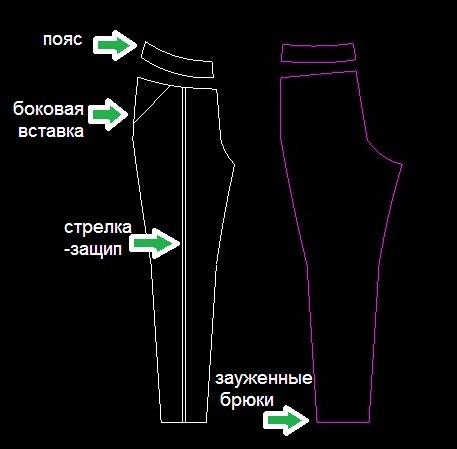
Let me remind you once again that I slightly mixed up the basic patterns and did not build on an Italian basis. Therefore, your appearance will be slightly different. But there’s nothing scary about that!
How to make a pattern for tapered trousers
Below you can watch a video tutorial on how to make a trouser pattern:
Or download the lesson “how to make a trouser pattern” on your computer using this link.
And that's all for me! In the following lessons I will show you how to create a tunic pattern for women!
See you soon...
In this collection we will learn how to create a basic pattern, on the basis of which you can design any style from the whole variety of styles of women's trousers.
For example, we will use size 48. Using the same principle, you can take measurements of your figure and create an individual trouser pattern.
And we will also look at - Fashionable women's trousers spring-summer 2016: photo selection of current models

To construct the drawing we will need the following measurements:
W = 38 cm - Waist semi-circumference
POb = 52 cm - Semi-circle of hips
Dbrk = 56 cm - Pants length to the knee
Dbr = 100 cm - Side length of trousers
W = 24 cm - Width of trousers at the bottom (set according to style, usually in the range of 24-28 cm)
As well as control measurements: knee girth, ankle girth and hip girth.
You can read more about these measurements in the article Taking Measurements.
Don't forget about the loose fitting allowances:
Fri - increase along the waistline (with a tight fit - 0, medium fit -1, looser - 2)
PB - increase along the hips (0.5-1.5 tight, 1.5-3 - medium fit, 3-4 - loose)
For our trousers we'll take following values increase:
Fri=0 cm,
Pb=1 cm.
Now let's start building a basic drawing of the basis of women's trousers.
Front half of trousers
Creating a pattern for women's trousers - step 1
Seat height and hip line
In the upper left corner we place point T1.
Let's calculate the seat height: T1Y1= 0.5x(Pob+Pb) +1 cm = 0.5 x (52+ 1)+1 = 27.5 cm.
From point T1 down a vertical line we plot the height of the seat and place point H1.
From points T1 and R1, left and right, draw horizontal lines
To calculate where the hip line will be, divide the T1Y1 segment into 3 parts, denoting the lower division point with the letter B1. R1B1 = (T1R1) / 3 = 27.5 / 3 = 9.1 cm.
Through point B1 we draw horizontal line left and right.

Creating a pattern for women's trousers - step 2
The next step in creating a pattern is to calculate the width along the hip line. The calculation is made using the following formula:
B1B2 = 0.5 x (Pob+ Pb) - 1 = 0.5 x (52+ 1) - 1 = 26.5 - 1 = 25.5 cm.
We put the resulting value from point B1 to the right horizontally, and place point B2. We draw a vertical line through point B2, and denote the intersection points as T2 and R2.
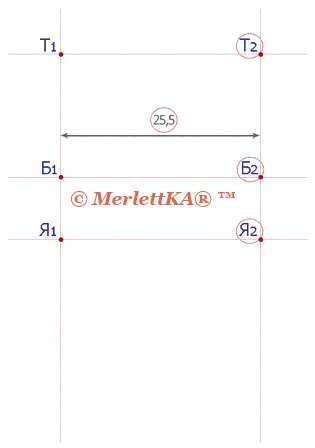
Constructing a pattern for women's trousers - step 3
From point Y2 to the right along the step line, we lay off a segment equal to 1:10 of the half-hip measurement (HH) with an increase for a loose fit along the hip line (Hb) and set point Y3.
R2Y3 = (Pob + Pb): 10 = (52 + 1): 10 = 5.3 cm
To determine where the fold line will be, divide the segment R1R3 in half and place the point R. That is, R1R = R1R3: 2 = 15.4.
Through point I we will draw up and down vertical line, and the points of intersection with auxiliary horizontal lines will be designated as T and B.
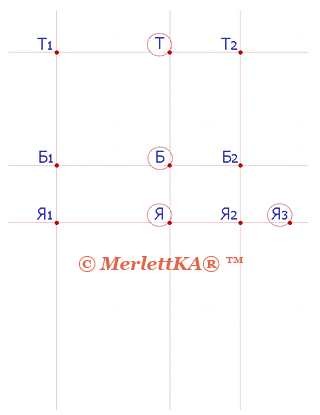
Constructing a pattern for women's trousers - step 4
Now let's mark the knee line and the bottom line of the trousers on our pattern.
We get the knee line by setting aside the measurement value Dbrk = 56 cm along the fold line from point T down, put point K here and draw a horizontal line through it to the left and right.
We get the bottom line by setting aside the measurement value Dbr = 100 cm along the fold line from point T down, 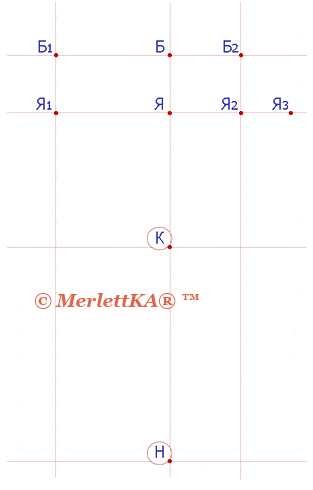
Constructing a pattern for women's trousers - step 5
Determine and mark on the pattern the width of the trousers along the bottom line and along the knee line.
The width of the bottom of the front half of the trousers is equal to the width of the bottom of the trousers in finished form minus 2 cm. We lay down segments equal to half the width of the front half along the bottom line on both sides of point H and put points H1 and H2.
НН1 = НН2 = (Шн - 2) : 2 = (24 - 2) : 2 = 11 cm.
The width of the trousers along the knee line is equal to the width of the trousers along the bottom line or 2-4 cm less (according to the style). We put half of this value on the knee line from point K in both directions, and put points K1 and K2.
In our case, we assume that KK1 = KK2 = HH1 = 11 cm.
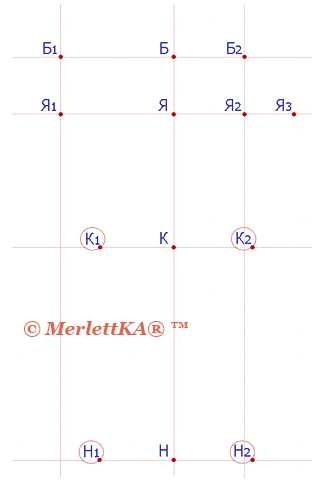
Constructing a pattern for women's trousers - step 6
We draw a step cut line on our pattern.
To do this, we use the auxiliary point R21, which we place in the middle of the segment R2R3.
Next, we connect the auxiliary point R21 and point K2, divide the resulting segment in half and draw a smooth concave line from the division point to point R3.
We connect points K2 and H2 with a straight line.
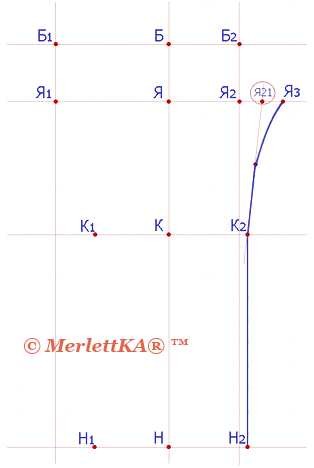
Constructing a pattern for women's trousers - step 7
We draw the line of the middle cut of the front half of women's trousers.
To do this, from point T2 to the left horizontally we lay off a segment T2T0 equal to 1 cm. The value T2T0 = 0 is also possible; it is used for figures with a convex belly, or when trousers are sewn from checkered or striped fabric (but not necessary).
We connect points T0 and B2 with a straight line. We connect points B2 and R3 with an auxiliary straight line, divide the segment in half and place point D.
We connect point D with a straight line to point H2.
We divide the segment DY2 in half, and denote the division point as D1. We draw the “bow” line through points T0, B2, D1, R3 with a smooth line.
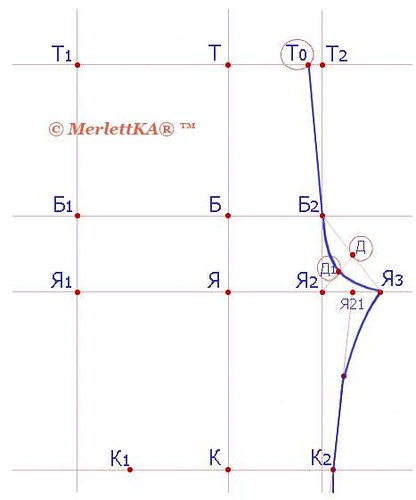
Constructing a pattern for women's trousers - step 8
The width at the waist line is 0.5 x (Pt + Pt) + two darts. The width of each dart is 2 cm. Take the minimum allowance along the waist line, i.e. 0.
Thus, T0T4 = 0.5x(38 + 0) + 2x2 = 23 cm.
There may be one or two darts at the waistline. In this pattern we use the option with two darts.
Place the first dart along the fold line, set aside 1 cm from point T to the left and right. The length of the dart is 8-10 cm. The sides of the dart are straight lines.
We will place the second dart in the middle of the segment from point T4 to the opening of the 1st dart. From the division point we lower a perpendicular 8-10 cm long - this is the center line of the dart, from it we put 1 cm to the left and right and design the sides of the dart, as in the case of the first one.
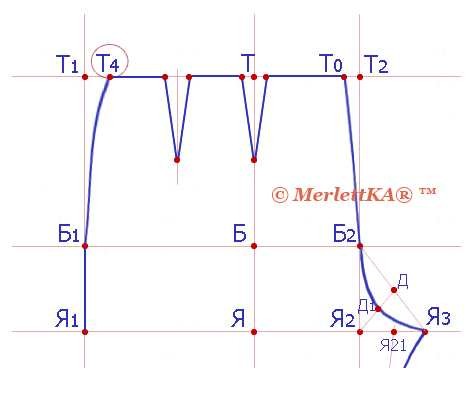
Constructing a pattern for women's trousers - step 9
We draw a side cut line. We connect points H1 and K1 of the auxiliary line, divide it in half, and from the division point to the right along the perpendicular we set aside a deflection of 0.5-0.7 cm.
We build a side cut line through points T4, B1, R1, the deflection point, K1, H1.
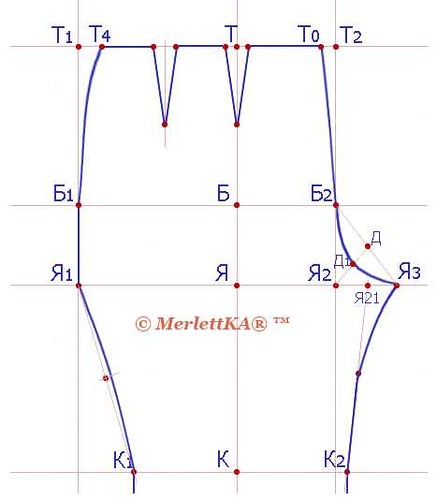
Constructing a pattern for women's trousers - step 10
We draw the bottom line of the front half of the trousers with a straight line H1H2.
The pattern for the front half of women's trousers is ready.

Back half of trousers
Constructing a pattern for women's trousers - step 11
We draw the bottom line of the back half of the trousers.
From points H1 and H2 to the left and right we set aside 2 cm and place points: on the left - H3 and on the right - H4. Thus, H1H3 = H2H4 = 2cm.
From point H we lay down 0.5 cm vertically and place point H5. We connect points H3, H5, H4 with straight lines. The bottom line is decorated.
We draw up the knee line. From points K1 and K2 we set aside 2 cm to the left and right and place points K3 and K4. Thus, K1K3 = K2K4 = 2 cm.

Constructing a pattern for women's trousers - step 12
We draw a step cutting line.
R2R5 = 0.2 x (Pob + Pb) + 1 = 0.2 x (52+ 1) + 1 = 11.6 cm.
From point Y2 to the right horizontally we put 11.6 cm and put point Y5.
Connect points R5 and K4 with a straight line.
We divide the segment Y5K4 in half, and at the point of dividing along the perpendicular to the left we set aside 0.5-0.7 cm - this will be an auxiliary deflection point. From point Y3 downwards we draw a perpendicular 1 cm long and set point Y31. R3 R31 = 1 cm.
From point Y2 through point Y31 draw a straight line to the right until it intersects with auxiliary line. Let us denote the intersection point as R51.
We draw a smooth concave line through points R51, the deflection point and point K4, and a straight line through points K4, H4. We get a step cut line.
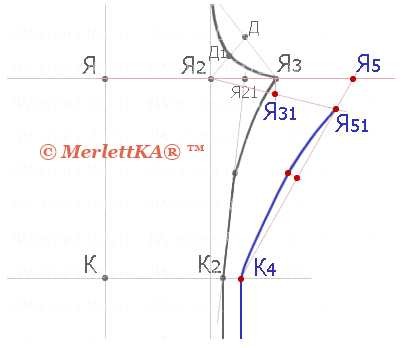
Constructing a pattern for women's trousers - step 13
We draw a line for the middle cut. To do this, put the auxiliary point D2 in the middle of the segment D1R2, that is, D1D2 = D1R2: 2.
From point T to the right we set aside 1/3 of the length of the segment TT2 and put point T21, that is, TT21=TT2: 3.
From point T21 we draw a vertical line up, set aside 4.3 cm on it and place point T5.
T21T5 = 0.1 x (Pob + Pb) - 1 = 0.1 x (52 + 1) - 1 = 4.3 cm.
We connect points T5 and R2 with a straight line, and denote the point of intersection with the hip line as B3.
We connect points T5, B3 with a straight line, points D2, Ya31, Ya51 - with a slightly concave line.

Constructing a pattern for women's trousers - step 14
Shape the hip line.
B3B4 = (Pob + Pb) - B1B2, where B1B2 = 25.5 cm (already calculated for constructing the front half of the trousers). That is, B3B4 = (52 + 1) - 25.5 = 27.5 cm.
From point B3 to the left horizontally we set aside 27.5 cm and place point B4.
Let's shape the waist line.
Т5Т7 = 0.5 x (POt + Pt) + 2 darts. We take the opening width of each dart to be 2 cm.
That is, T5T7 = 0.5 x (38 + 0) + 2 x 2 = 23 cm.
From point T5 to the left, make a notch on the waist line with a radius of 23 cm and place point T7. We connect points T7 and T5 with a straight line.
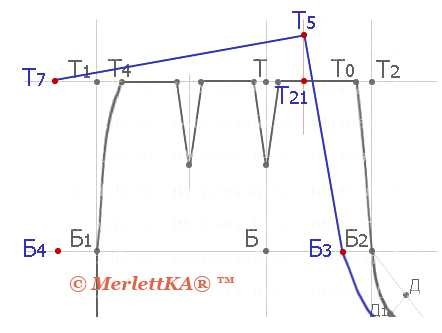
Constructing a pattern for women's trousers - step 15
We make darts.
We divide the segment T5T7 into three equal parts, from the division points we lower perpendiculars 8-10 cm long - these will be center lines darts, from which we set aside 1 cm to the left and right. We draw out the sides of the darts with straight lines.
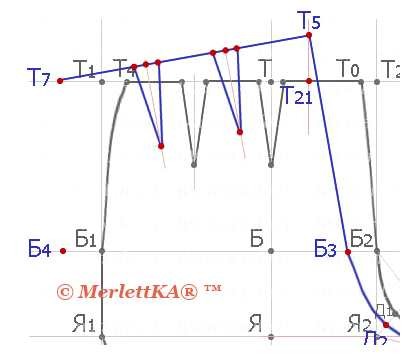
Constructing a pattern for women's trousers - step 16
We draw a side cut line.
To make the side cut line smooth, divide the distance B4K3 into three equal parts.
From the division points along the perpendicular we will set aside 0.5 - 0.7 cm. top point divisions to the left, and at the bottom point - to the right.
Pants have long been considered items must have any lady's wardrobe. This comfortable, practical and incredibly stylish piece of clothing is popular in both casual and business fashion. It's hard to believe that once upon a time only men were allowed to wear trousers. However, now times have changed, and women, as well as men, have the opportunity to fully enjoy their undeniable advantages. Let's see which trousers will be in fashion in the new spring-summer season 2016.
Pants with stripes have become increasingly popular at fashion shows. Despite them external simplicity, combining this model of trousers with other wardrobe items can be very difficult. This is because initially stripes were characteristic only sports options trousers, whereas now they can be seen on casual, grunge and even business clothes. So is it sports or classics? Let's see in what role famous designers presented stripes to us. So, for example, Chloe offered quite beautiful and feminine tracksuits with stripes, Undercover incorporated stripes into grunge looks, while Marco de Vincenzo decorated business and casual trousers with them. Fashionable trousers Belstaff, Jonathan Saunders, Juicy Couture, Acne Studios, John Galliano, Paco Rabanne, Nicole Miller, Antonio Berardi, Tommy Hilfiger, Kimora Lee Simmons, 6397 were also suggested to wear with stripes.

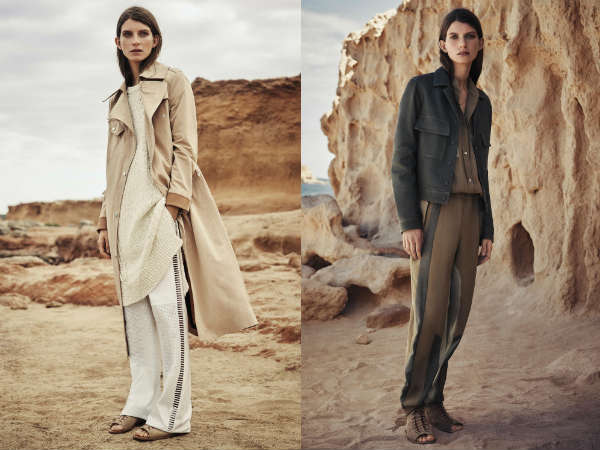

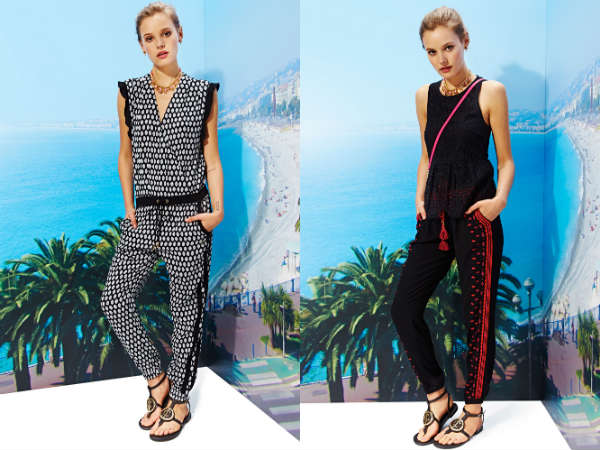
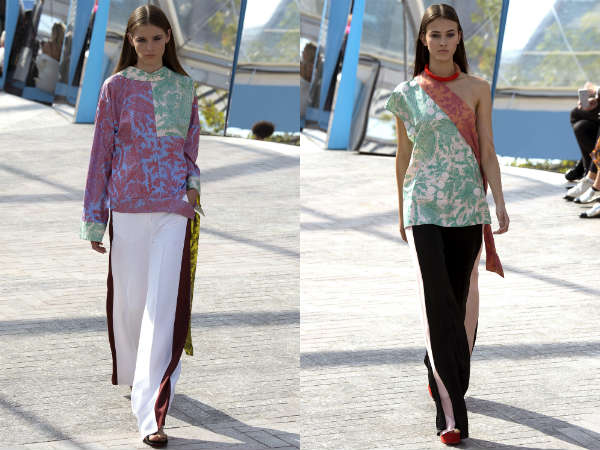


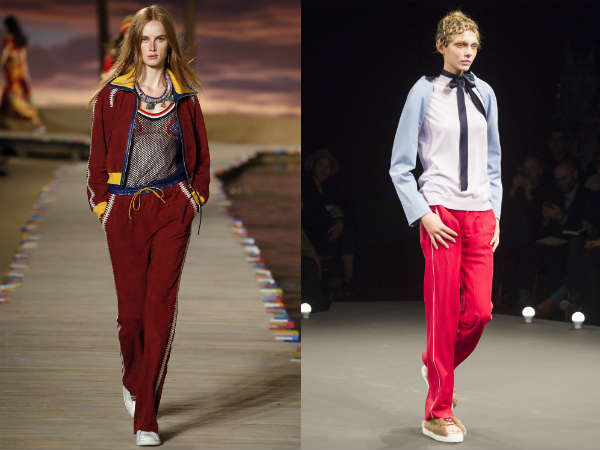
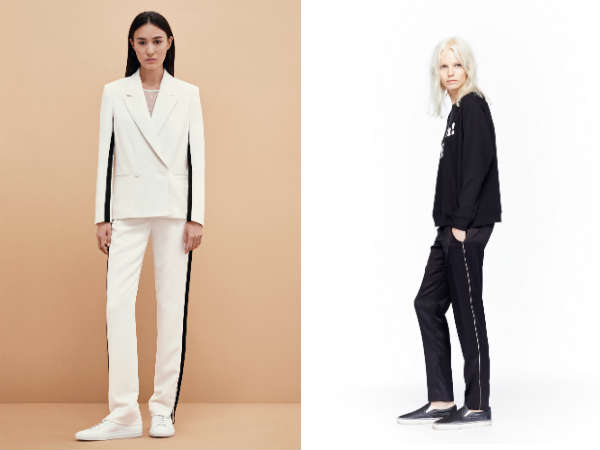
The return of the triumphant 70s in the form of flared trousers was marked in the past fashion seasons. However, it is difficult not to notice that in the new warm season it has reached its peak. Ashis, Custo Barcelona, Derek Lam, Gareth Pugh, Eudon Choi, Calvin Klein, Edun, Escada, Rosie Assoulin, Nanette Lepore, Tanya Taylor, Norma Kamali, Jill Stuart, Hellessy, Rebecca Minkoff, Richard Malone, Pamella Roland, Ellery, Chanel , Nili Lotan, Adam Lippes offered a lot of options for this style, ranging from classic flares from the hip to outrageous trousers, reminiscent of godet skirts in their cut. The variety of options for this style allows you to use it almost everywhere: at work, at school, at a party, in everyday life.

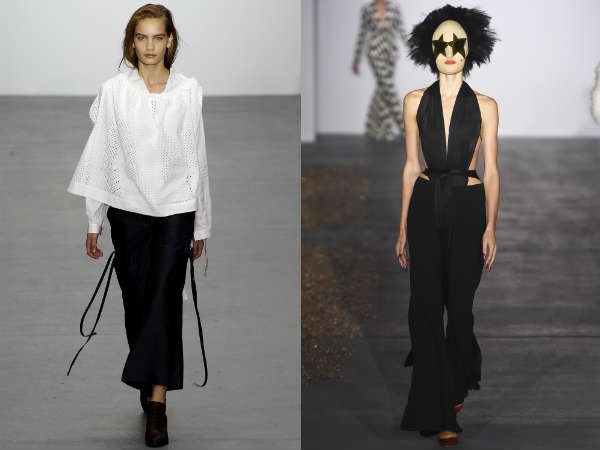
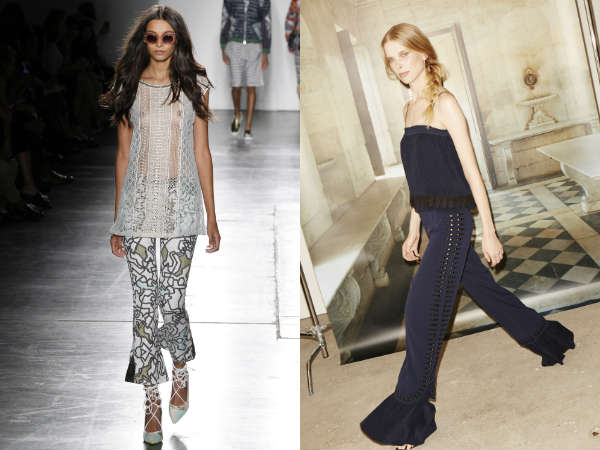
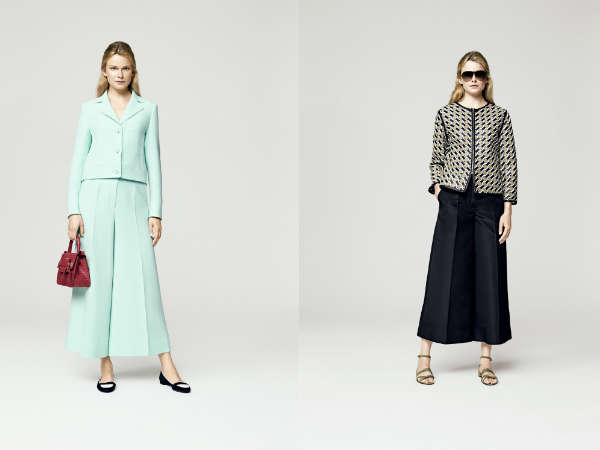
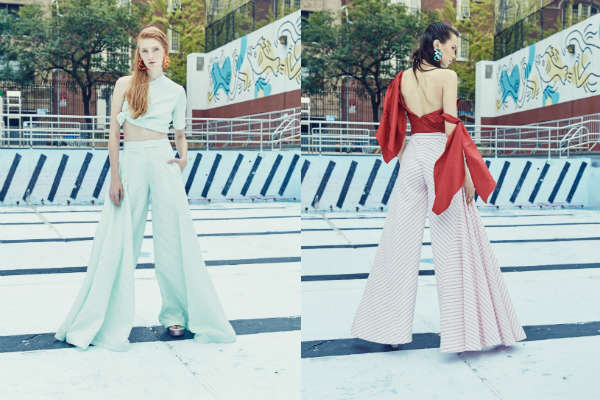


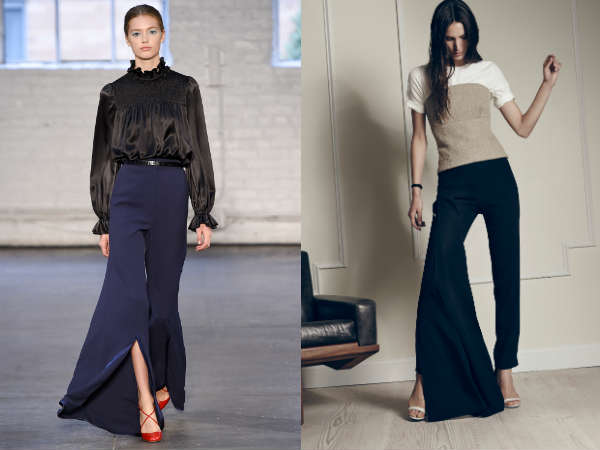


Trousers made of transparent fabrics
Transparent trousers are a rather bold and extraordinary solution, which will suit only liberated and confident fashionistas. If you still want similar trousers, but cannot decide, try an option in which not the entire surface of the product is covered with transparent materials, or a model that provides a kind of transparent veil covering flesh-colored trousers. Silk, mesh, chiffon were used to create such masterpieces Lela Rose, Loewe, The Row, Marques Almeida, Veronique Branquinho, Etro, Balmain, Elie Saab, Lela Rose, John Galliano, Giorgio Armani, Emilio Pucci, Joseph, Issa, Diesel Black Gold , knitted jersey, as well as synthetic materials, like cellophane.
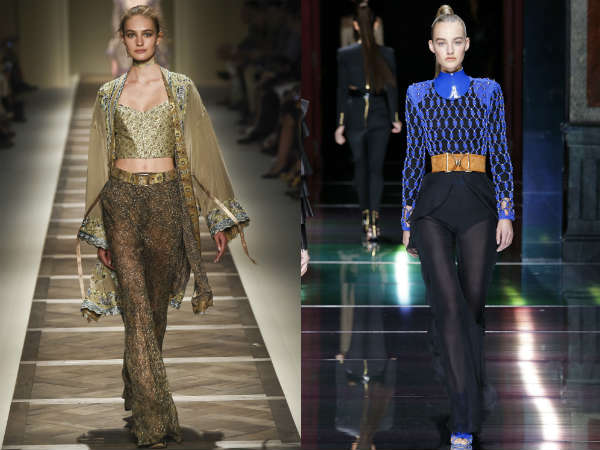

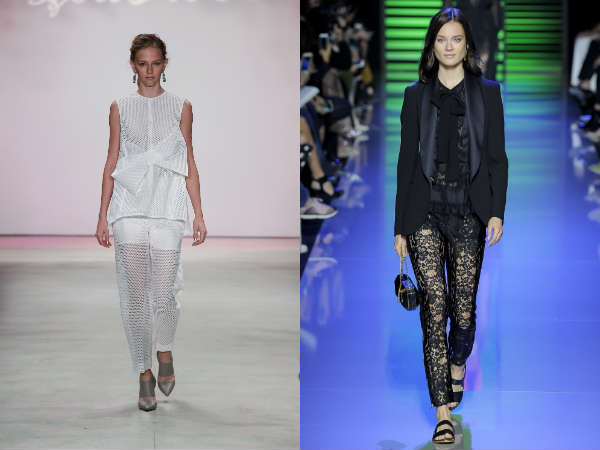

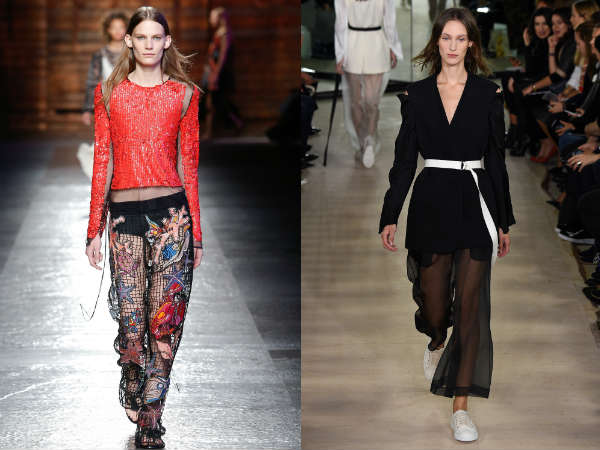
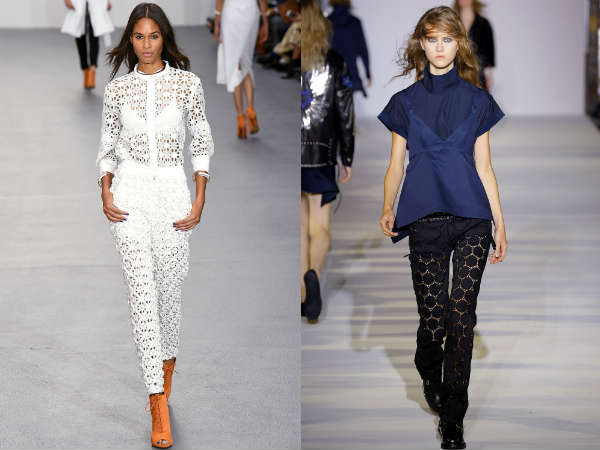
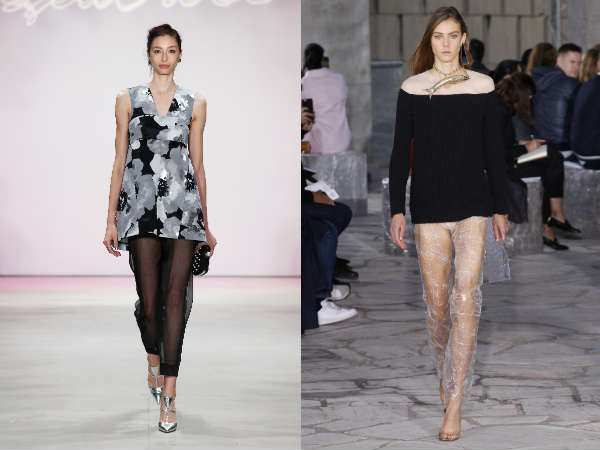
Jumpsuits have hit the fashion jackpot again. In the new spring-summer season they found a place in the collections of such famous designers, like Boss, Betsey Johnson, Baja East, Adam Selman, Anrealage, Sophie Theallet, Pamella Roland, Chloe, Chalayan, Daks, Emilia Wickstead, Diesel Black Gold, Ermanno Scervino, Adam Lippes, Frame Denim, Edun, Giles, Felder Felder, Gabriele Colangelo, Giamba, Escada. The selection of such wardrobe items is amazing. The designers clearly did not skimp on invention, offering overalls with a bandeau top, a sundress, as well as models with deep V-necks, English armhole, boat, etc. In addition, a fairly wide selection of materials and colors was presented. Thus, you can find monotonous and printed products, knitted and leather options. Quite a lot of the same transparent materials, which, without hesitation, reveal all the nudity female body. Often there are models under a robe, in which the girls looked like real representatives of the working class.
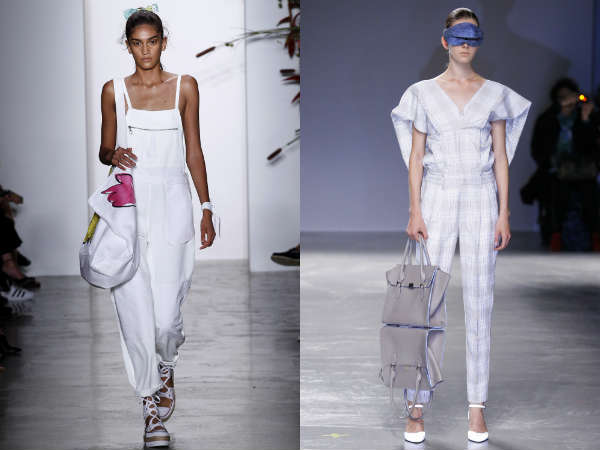

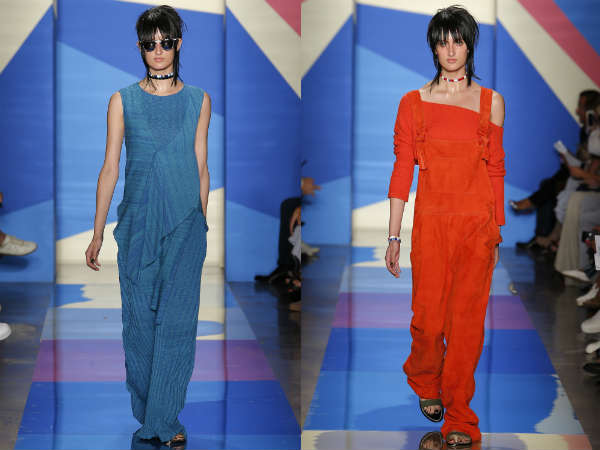

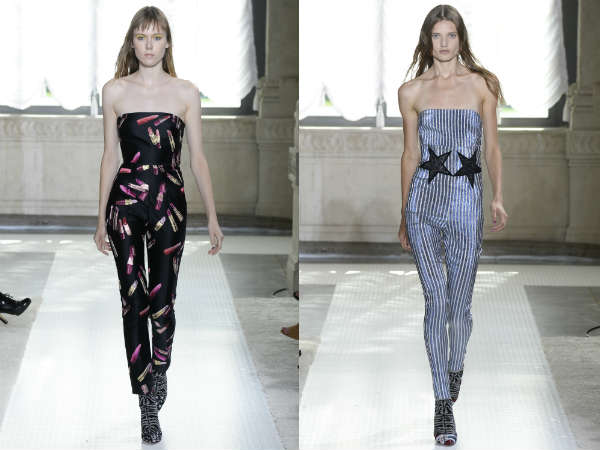
![]()
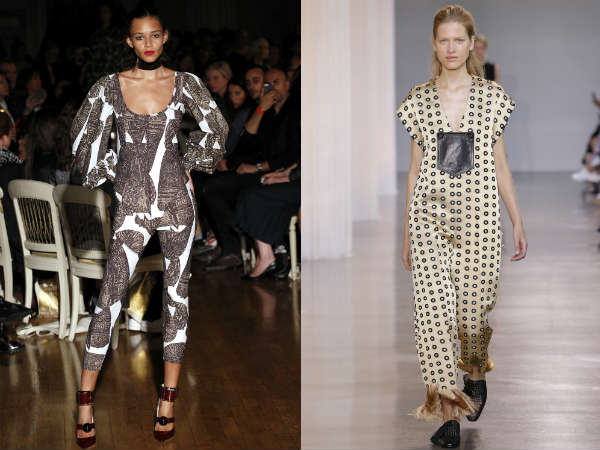
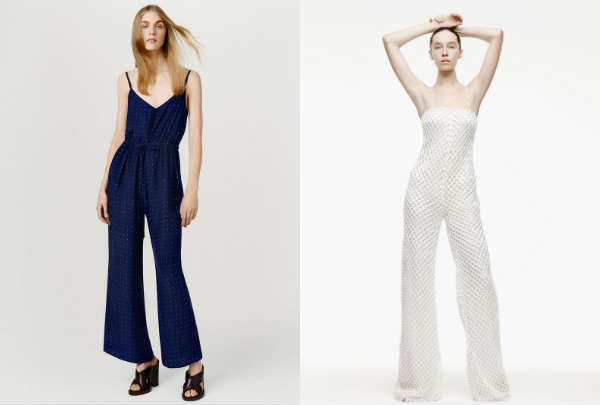
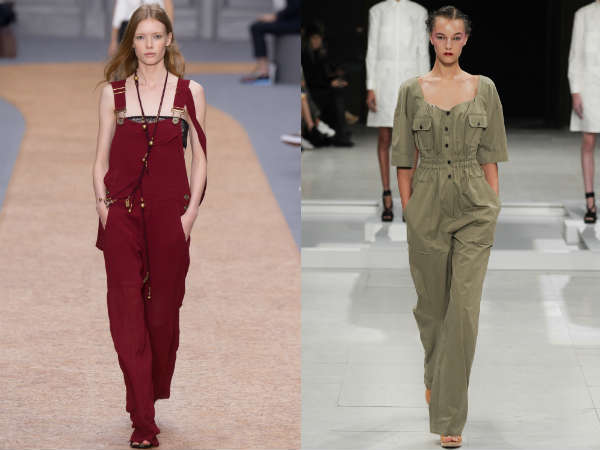
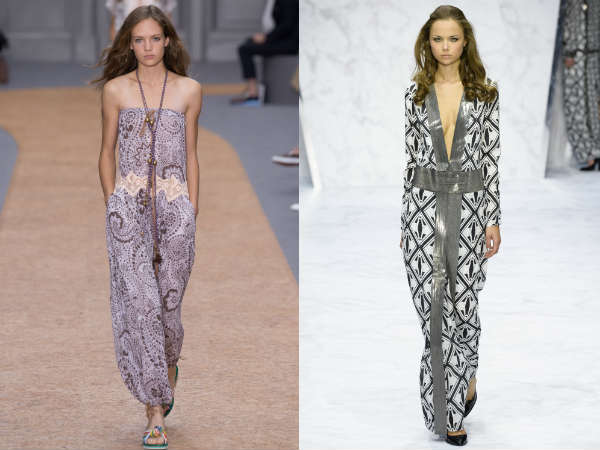
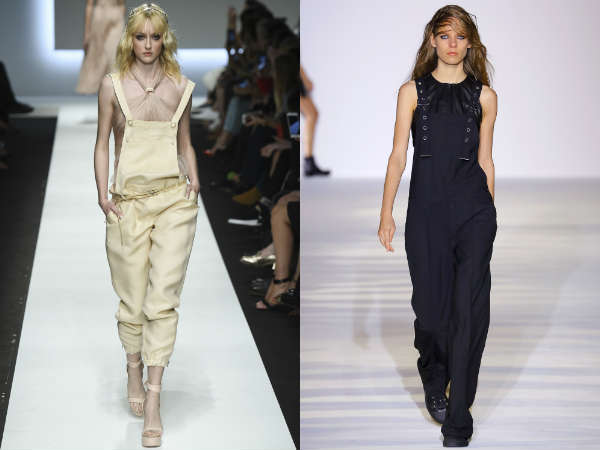


Cropped trousers spring-summer 2016
Cropped trousers are by no means new in the fashion world. We have been accustomed to the cropped version of trousers for several years now. And this year, nothing has changed in this field: the catwalks are still teeming with cropped trousers, which can be found in the new lines of Valentin Yudashkin, Undercover, Tory Burch, Emporio Armani, Dries van Noten, Gucci, Dolce and Gabbana, John Galliano, Acne Studios , 3.1 Phillip Lim, Akris, Daks, Alexander Wang, Mugler. Judging by the fact that this model is offered by such renowned fashion gurus, it is truly destined to become iconic in the new warm season. It’s nice that the choice of length still remains with the woman, who can choose an option that only slightly reveals the ankle or trousers that are more reminiscent of capri pants or long shorts.
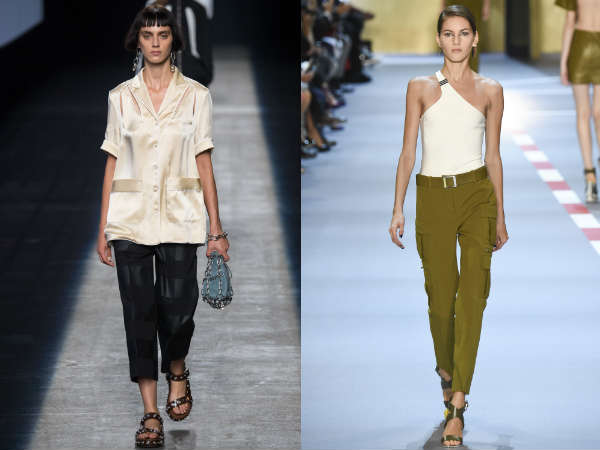
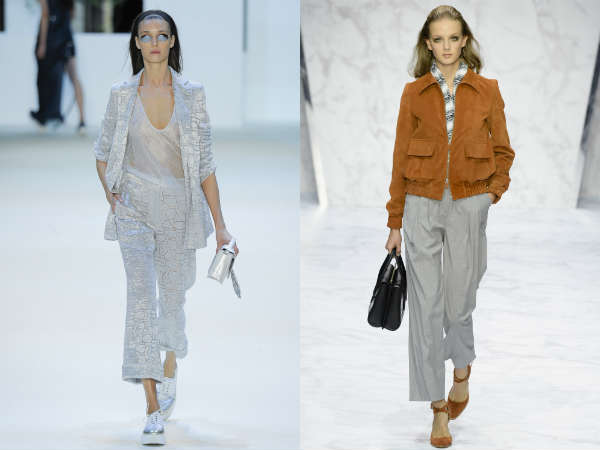
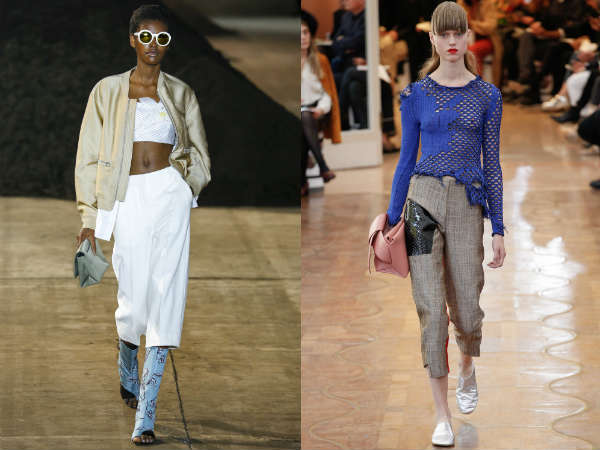
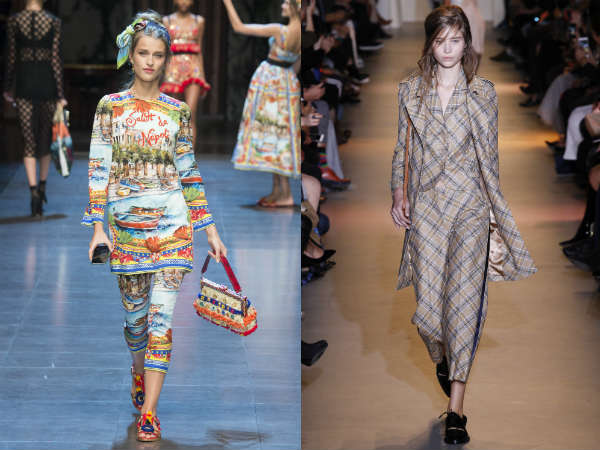
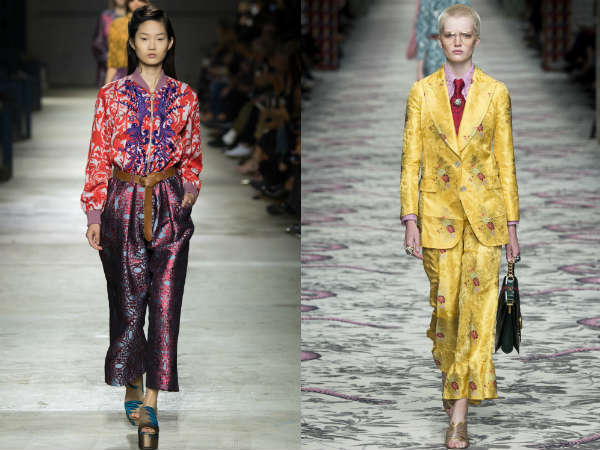


High waist is another iconic element of the new warm season. Such trousers will appeal to those who want to divert attention from the problematic waist, giving the image even greater femininity and grace. You can see examples of such models in the lines 3.1 Phillip Lim, Alexis Mabille, Badgley Mischka, Brandon Maxwell, Holly Fulton, David Koma, Haider Ackermann, Les Copains, Emilia Wickstead, Fendi. As you can see, a high waist can be achieved both through the cut and by adding thick belts and belts to the trousers.



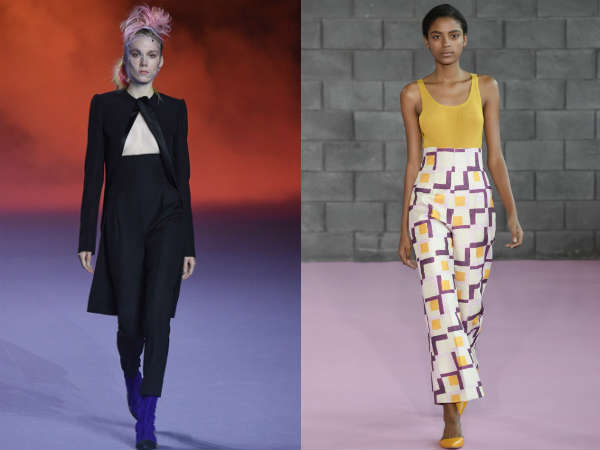

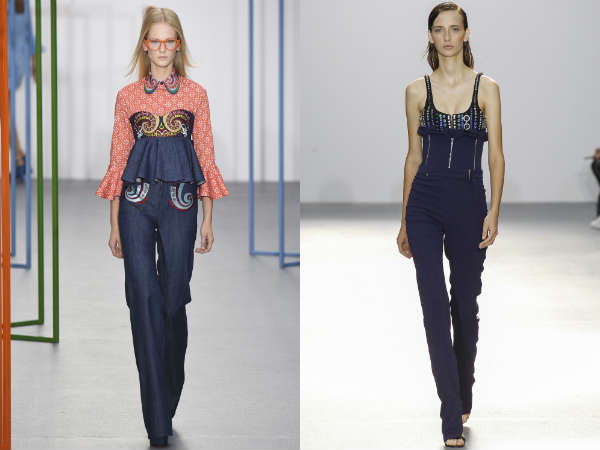
Wearing trousers with a skirt is a rather innovative solution that has replaced the once popular trouser skirts. Alexander McQueen, Barbara Bui, Chanel, Caitlin Price, Esteban Cortazar, Eudon Choi suggested combining these two wardrobe items not in one product, but in the image as a whole. From now on, you can safely wear developing ones over your favorite trousers. long skirts, which, at times, were very similar to trains. Moreover, such skirts can be of a completely unpredictable cut - both classic and asymmetrical.
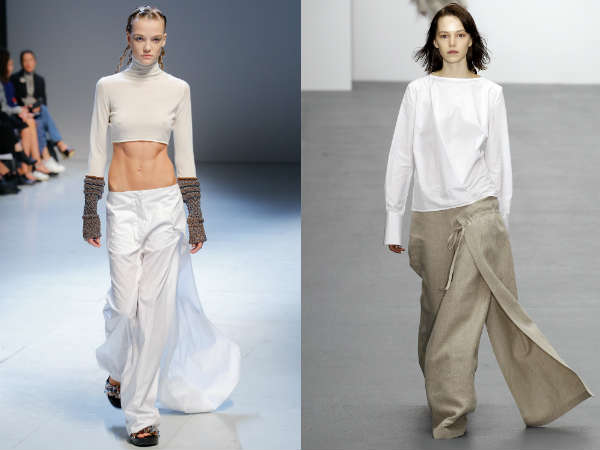


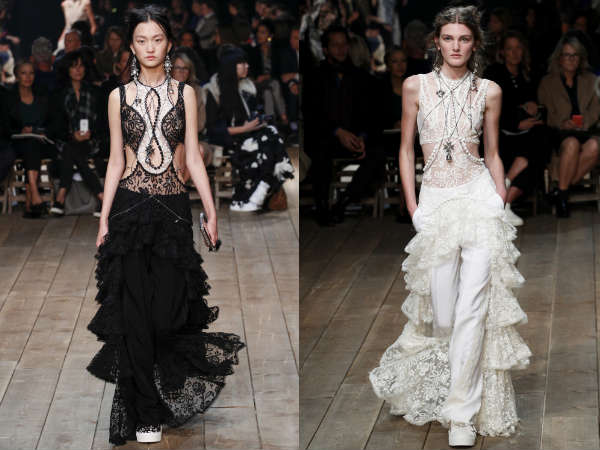
Loose fit trousers
Wide trousers have also not disappeared. Therefore, you should not hide banana trousers, riding breeches, sails purchased in past fashion seasons far away. Feel free to take them out and enjoy their company for at least one more spring-summer season. In the new warm season, such products were offered by Nina Ricci, Monse, Marcelo Burlon County, Marni, Josie Natori, M Missoni, Lemaire, Koche, Issey Miyake, Hermes, Giorgio Armani, Givenchy, Edun, Erin Fetherston, Chanel, Ashish, TSE, Escada ,Marni,Wendy Nichol,Osman,Peter Pilotto,Tods, Ralph Lauren, Ports 1961, Rhie, Brunello Cucinelli, Noir Kei Ninomiya.
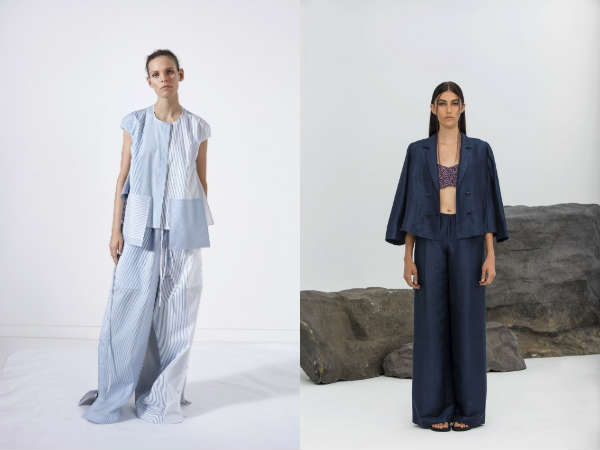
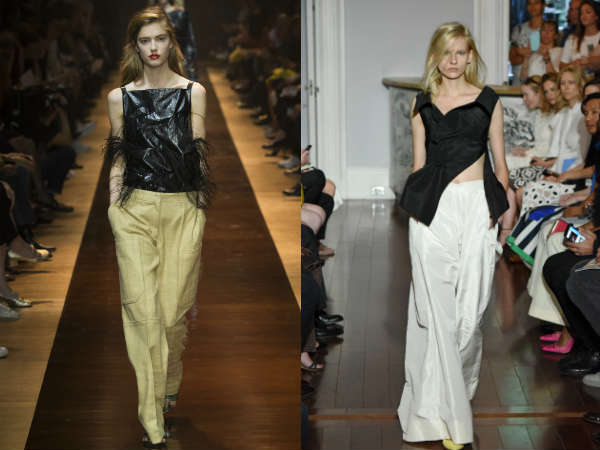
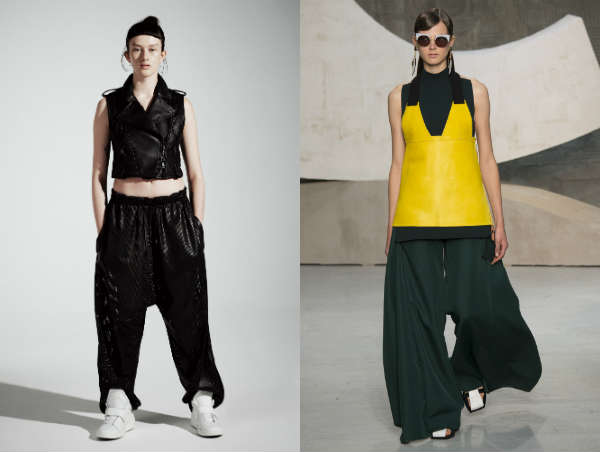

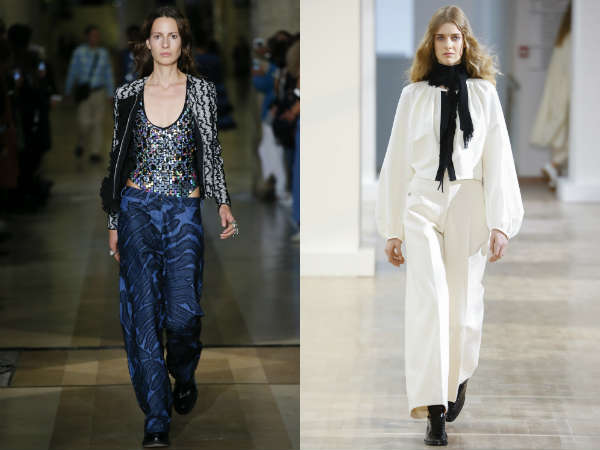
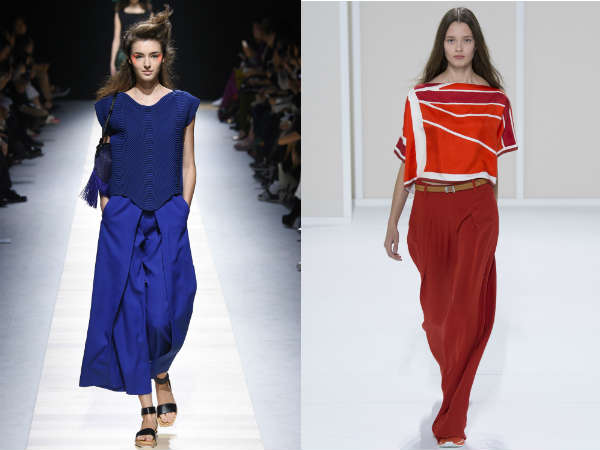

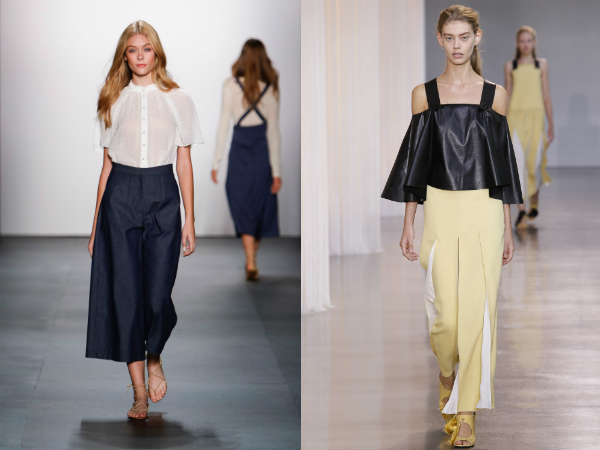
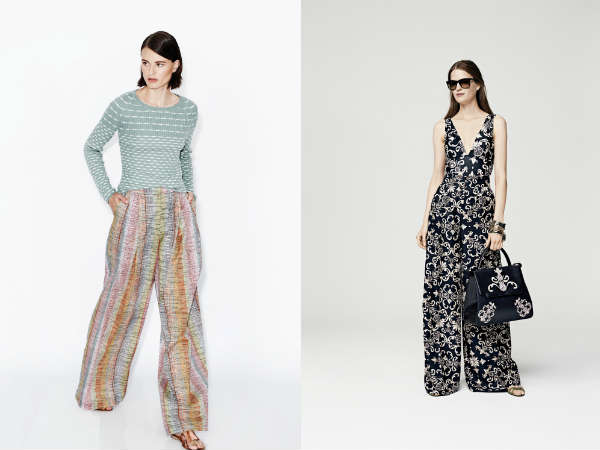


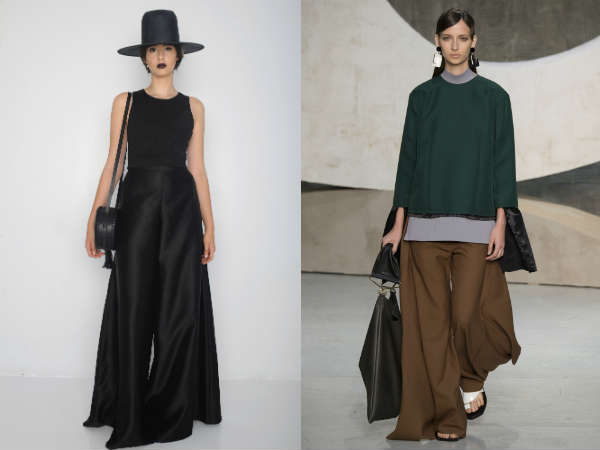
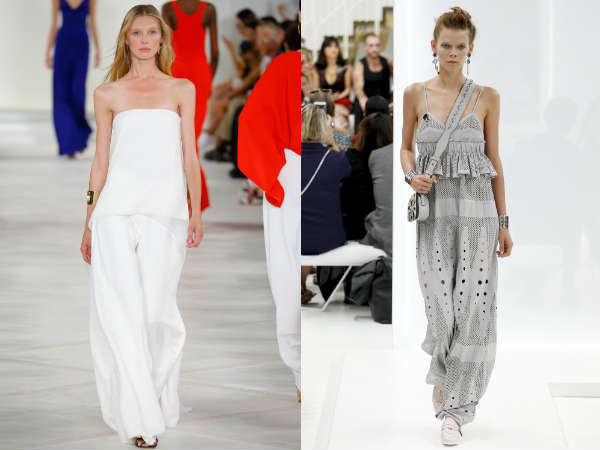

Knowing about the inconsistency and contrast of fashion, it is not surprising that along with wide legs, tapered trouser models will be in favor, for example, tube trousers and skinny trousers, which were often found in the collections of Ann Demeulemeester, Anthony Vaccarello, Carven, Dolce and Gabbana, 3.1 Phillip Lim, Balmain, Anthony Thomas Melillo, Banana Republic, Versus Versace, Undercover, Moschino, Roberto Cavalli, Komora Lee Simmons, Haider Ackermann, Katie Gallagher, Juicy Couture, Saint Laurent, Theory, Mugler, Marco de Vincenzo.
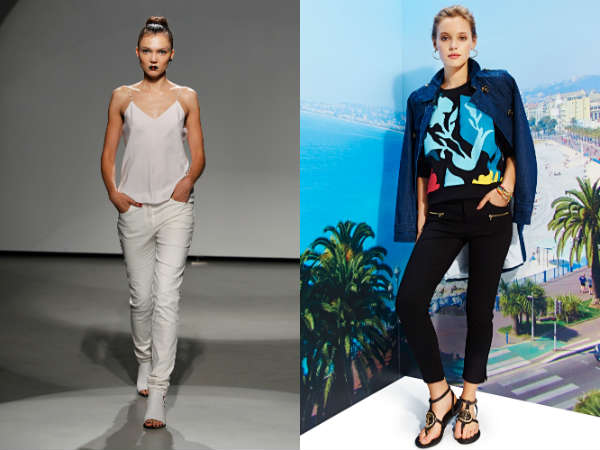
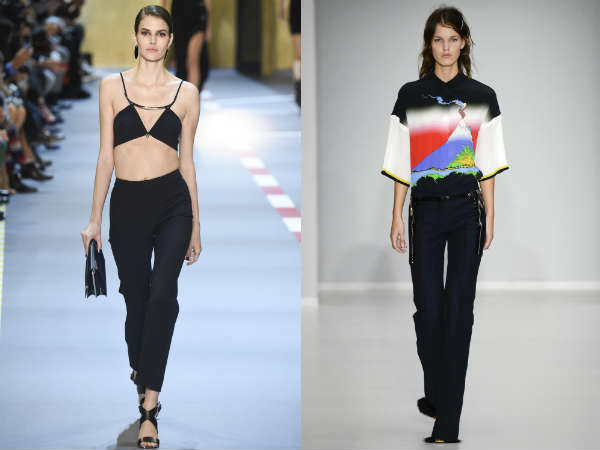
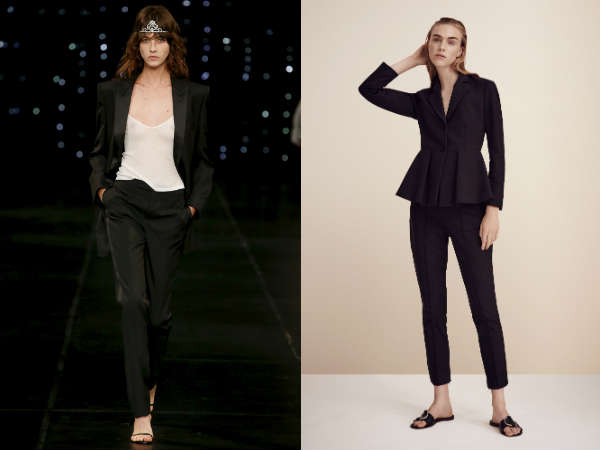
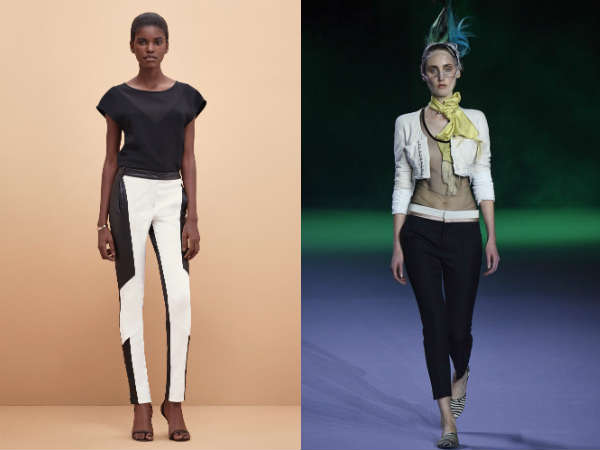

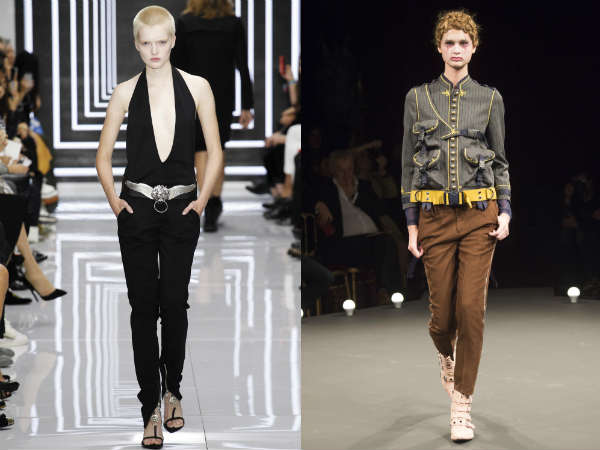
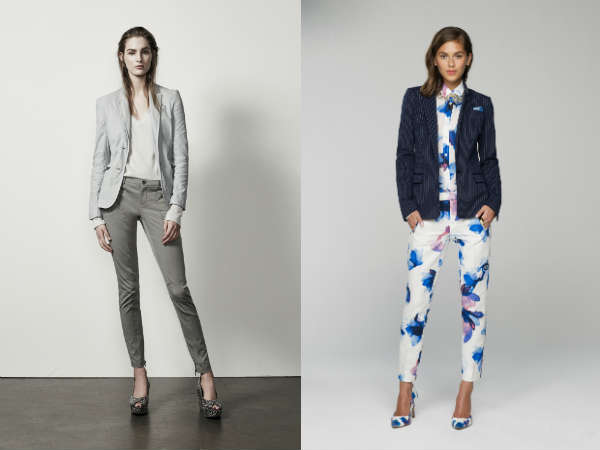
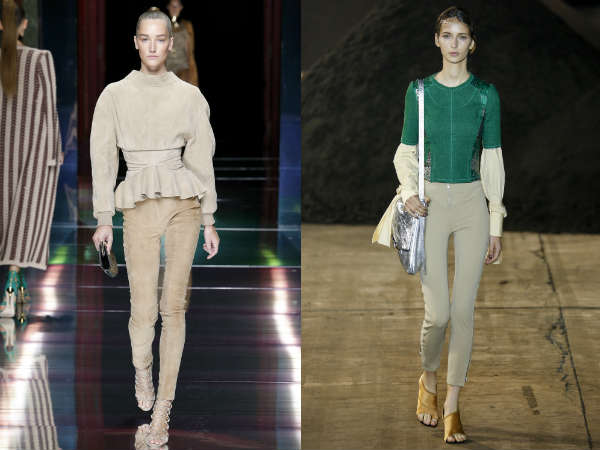
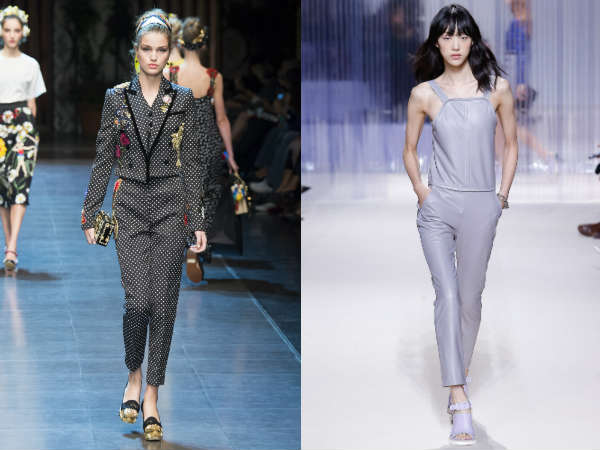

Some designers decided to expose women's legs by using transparent materials, while others, for this purpose, gave preference to fancy cutouts through which the naked body was visible. women's skin. Whether or not you decide to buy such creations, one thing is for sure: in such “breathable” trousers you will definitely not be afraid of the heat. You will find examples of trousers with curly cutouts in the lines Greg Lauren, Christopher Raeburn, Phoebe English, Christopher Kane, Eckhaus Latta.


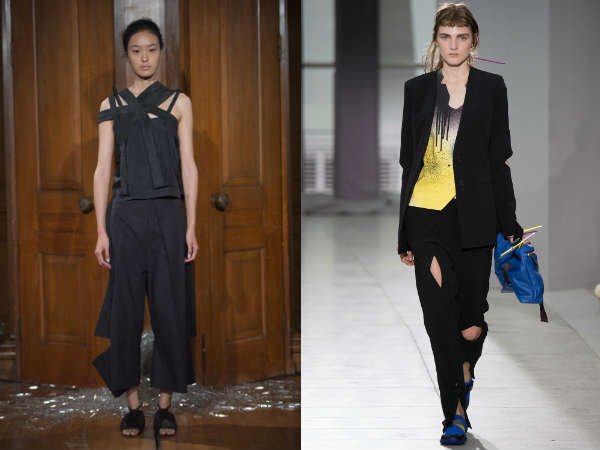
Ralph Lauren, Julien David, Jill Stuart, McQ Alexander McQueen also decided to lift the veil of mystery a little, but they chose cuts that delicately tear off the skin at the bottom of the leg.
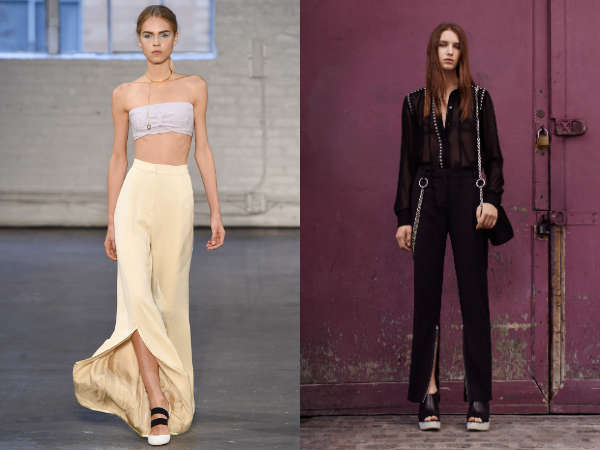
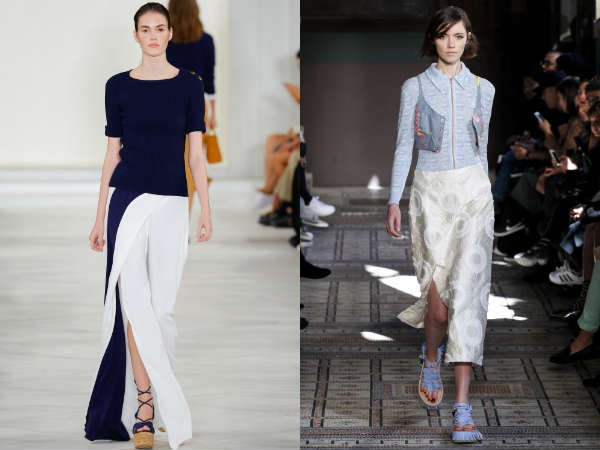
If we talk about the most popular materials that were used to sew trousers, then leather will be a true competitor to transparent fabrics. Leather trousers have broken all popularity records, hitting another fashion jackpot. It is difficult not to notice that preference for to a greater extent was given to black leather and varnish, although there were also models made in colored leather. It will no longer be a revelation to anyone that modern fashion allows you to wear leather trousers not only for informal meetings, but also for work, as clearly evidenced by the shows Ann Demeulemeester, Creatures of the Wind, Brandon Maxwell, Cushnie et Ochs, Courreges, Alexander Wang, Diesel Black Gold, Devon Halfnight Leflury, Marques Almeida , Marc Jacobs, Vetements, Tibi, Paco Rabanne, Topshop Unique, Fendi, Haider Ackermann, Isabel Marant, Victoria Beckham.

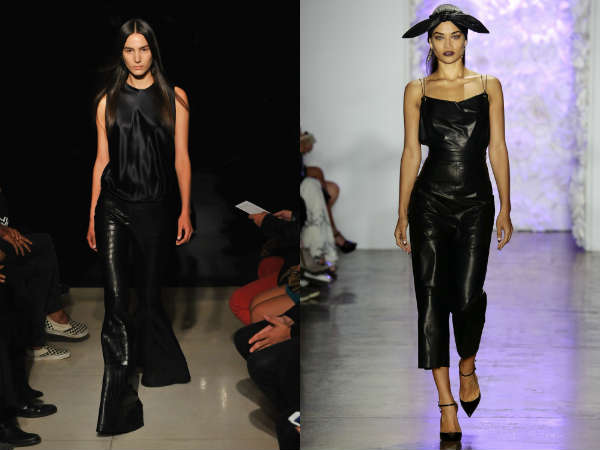
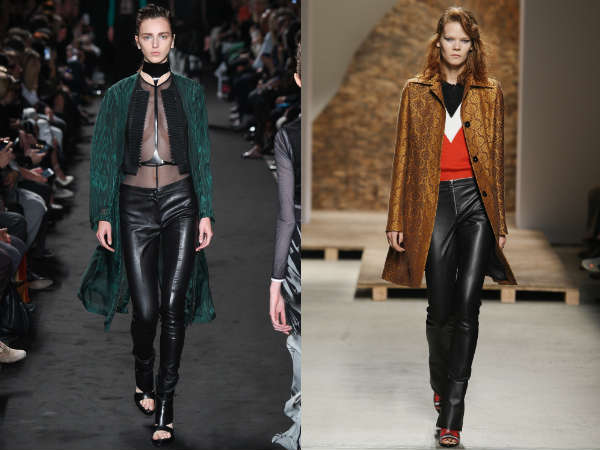

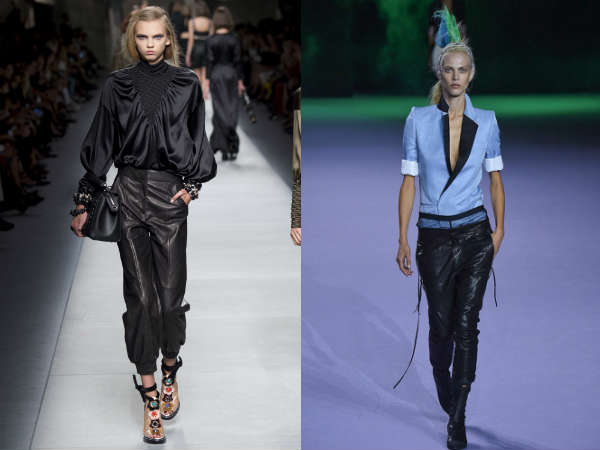


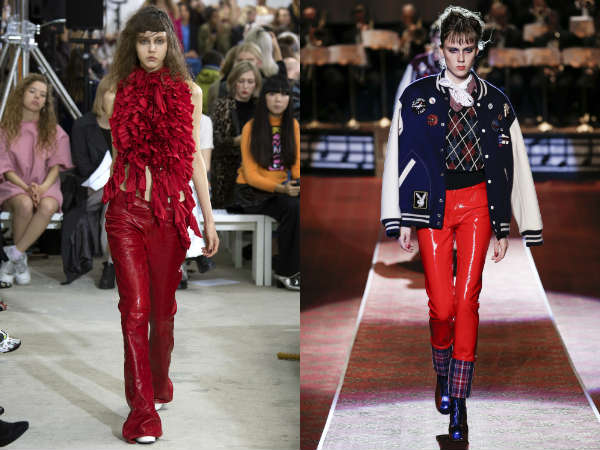
As already noted, in the new warm season, designers took advantage of all their creative forces, bringing to life many bold ideas, which is clearly visible in the way they began to decorate their products, including trousers. VFiles, Rodebjer, Anthony Vaccarello, Courreges, Dolce and Gabbana, Custo Barcelona, Ryan Lo, Balmain, Adam Selman, Loewe, Each Other, Alexander Wang, Christopher Kane, Saint Laurent, Thomas Tait, Acne Studios, Sharon Wauchob, Dsquared2 proved, that there are no limits to imagination and there cannot be. From now on, trousers can fit the most various items decoration and decoration - stones, rhinestones, feathers, fringe, metal rivets and other similar fittings, embroidery, appliqués, contrasting inserts, fur, ruffles, frills, perforations, decorative seams and even imitation pieces of glass.
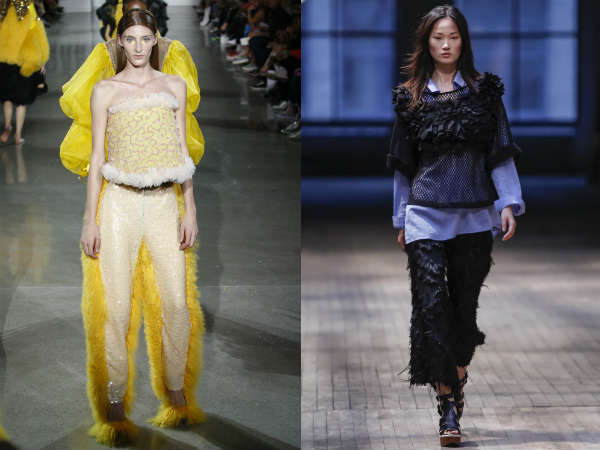
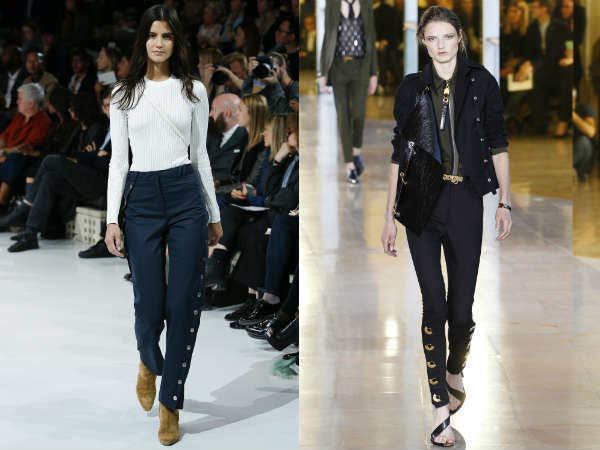
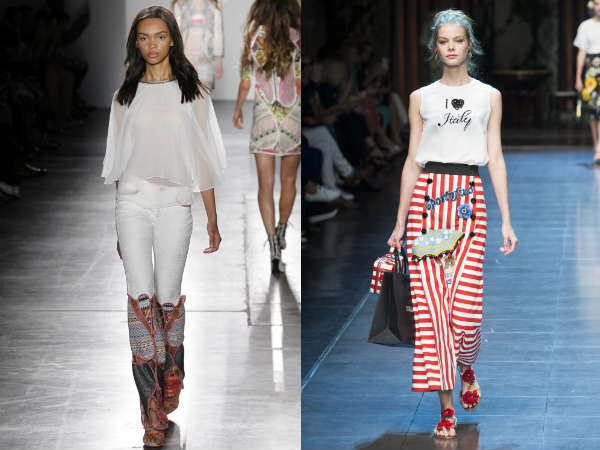
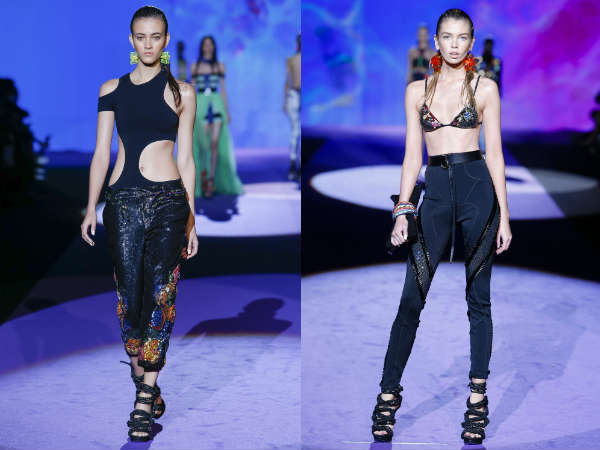
![]()


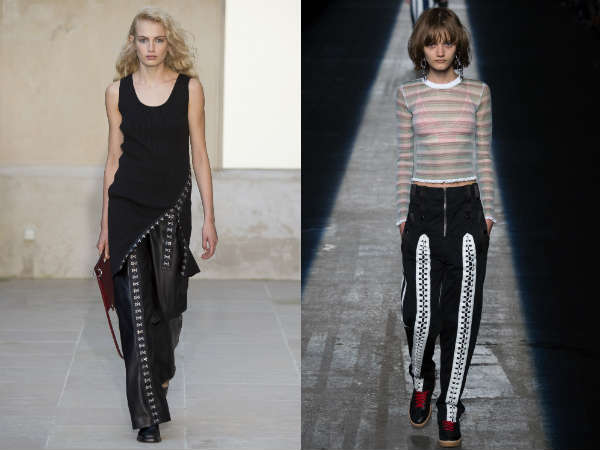


Fashion designers did not skimp on prints either. The leaders were immediately identified, which can safely include floral and geometric prints. Yes, on the one hand, there is nothing new - we have long been accustomed to them, but in this fashionable period, flowers have become more distinct, the colors have become brighter, and the varieties of flowers have become more diverse. The same can be attributed to geometry, which manifested itself in complex abstract illusionary patterns, shapes and colors. Animal prints are also noticeable, for example, illustrations of birds or lion faces from Roberto Cavalli and Sonia Rykiel. The whole variety of fashionable prints can be seen in Karen Walker, Marc Jacobs, M Missoni, Stella Jean, Stella McCartney, Tanya Taylor, Victoria Beckham, Alice and Olivia, Polo Ralph Lauren, Tommy Hilfiger, Trina Turk, Vivienne Westwood, Escada, Fausto Puglisi, House of Holland, Gucci, Monse, Norma Kamali, Roksanda, Iceberg, Guy Laroche, Moschino, Lacoste, J Crew, Gareth Pugh, Each Other, Emanuel Ungaro.
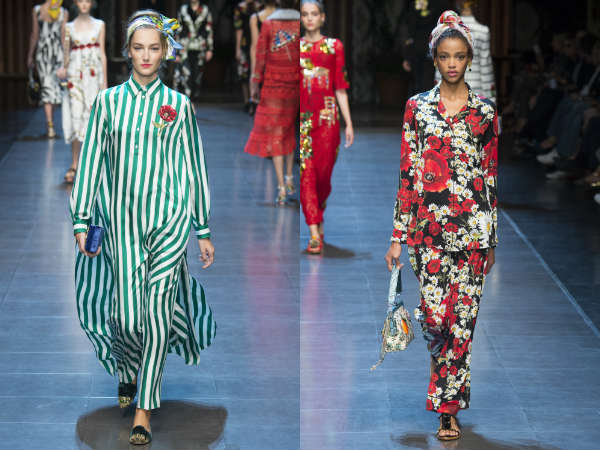
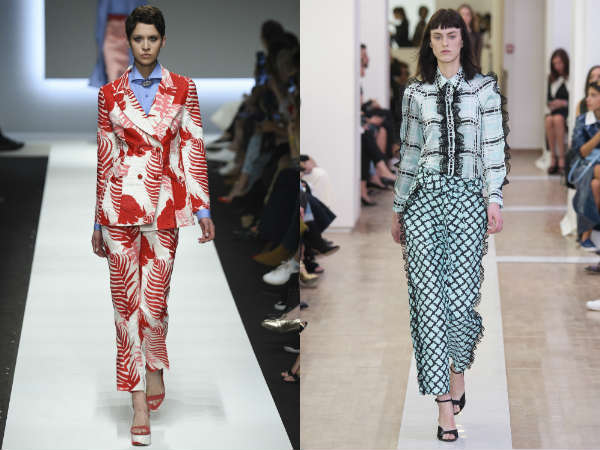
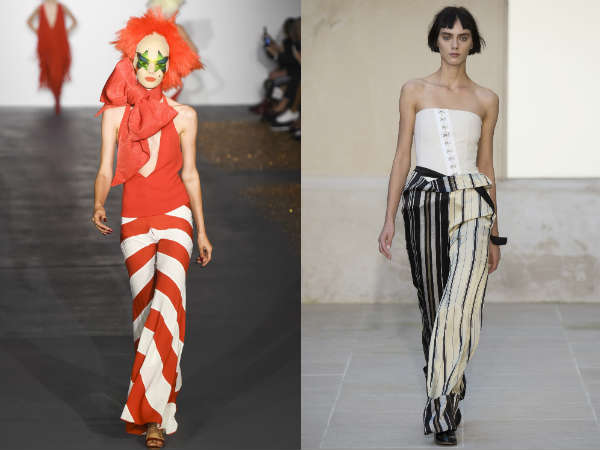
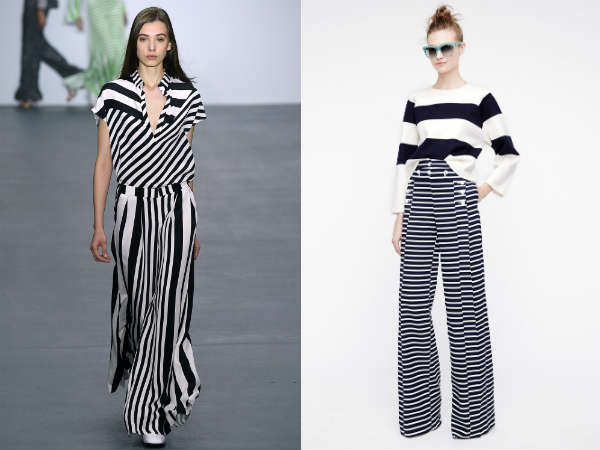

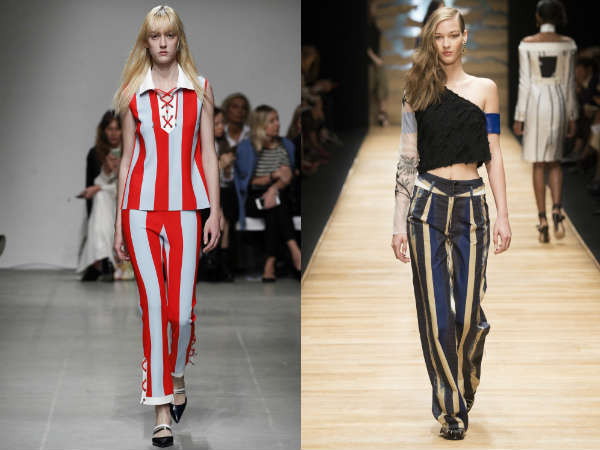
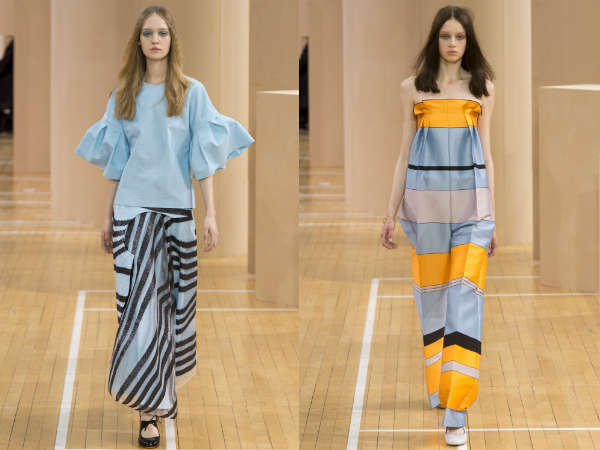

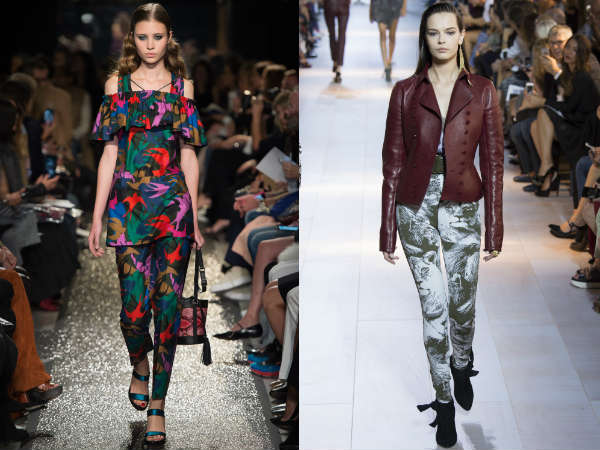
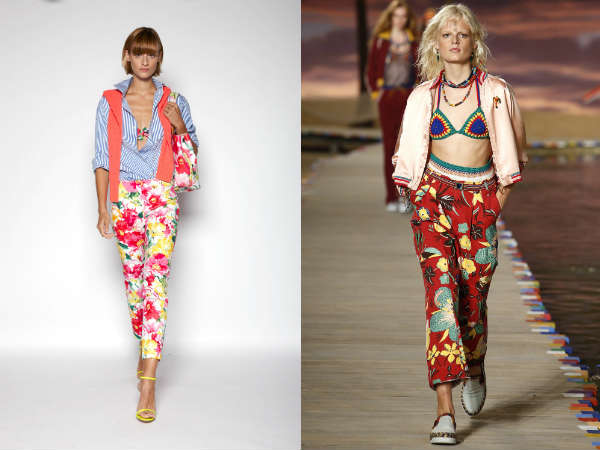
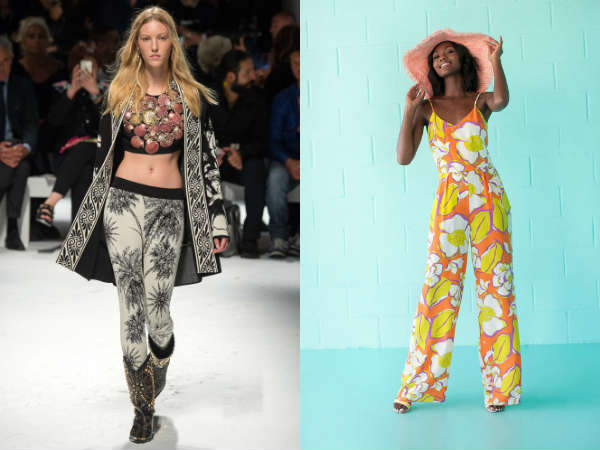
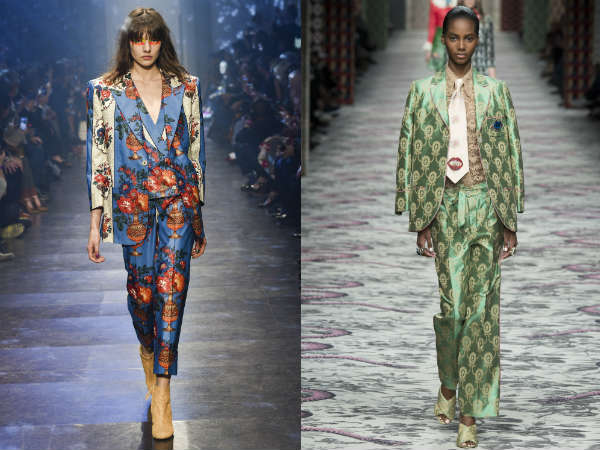
![]()
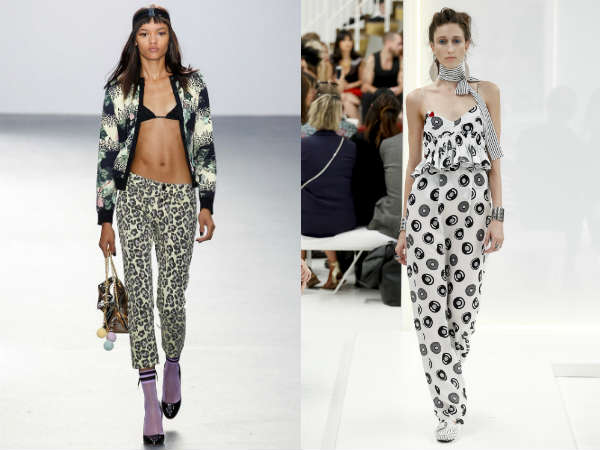
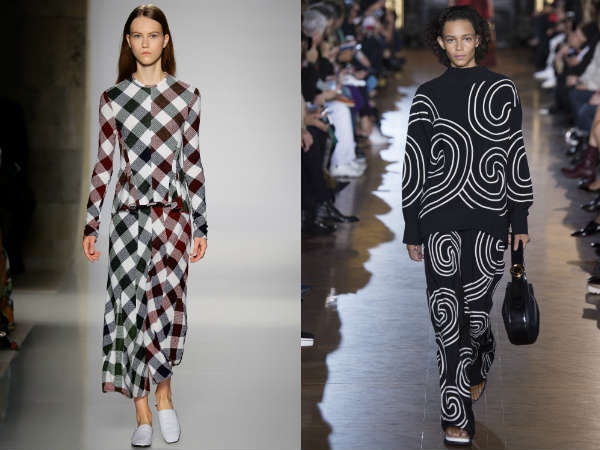

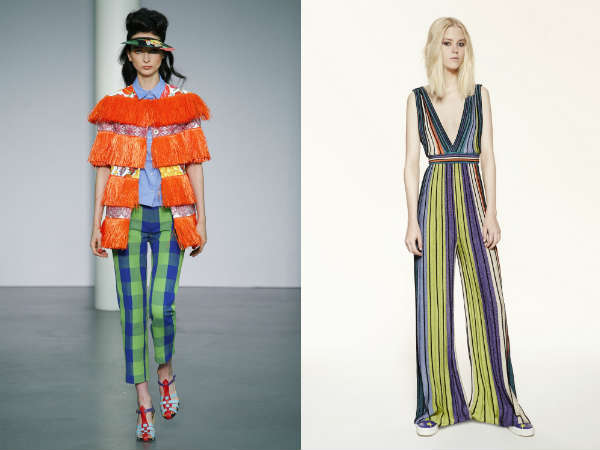

And finally, about fashionable colors. An all-consuming kingdom reigns here too wide choice. Want to black and white trousers- Please! If you like silver glitter, look at the options in the lines Monse, Manish Arora, Alexander McQueen, Haider Ackermann. If you love rich, bright colors, the collections from Banana Republic, Assembly, Tracy Reese, Trina Turk, Alexis Mabille, Veronique Leroy, Maison Margiela, Vetements, Alexis Mabille, Valentin Yudashkin, Max Mara, Wes Gordon, Moschino, Tracy Reese, Koche, Escada are for you , Akris, Altuzarra, which have a huge selection of different tones of red, green, yellow, orange, fuchsia, blue and cyan. Well, if your soul is inclined towards warm and soft shades, then take a closer look at Trussardi, Alberta Ferretti, Veronica Beard.
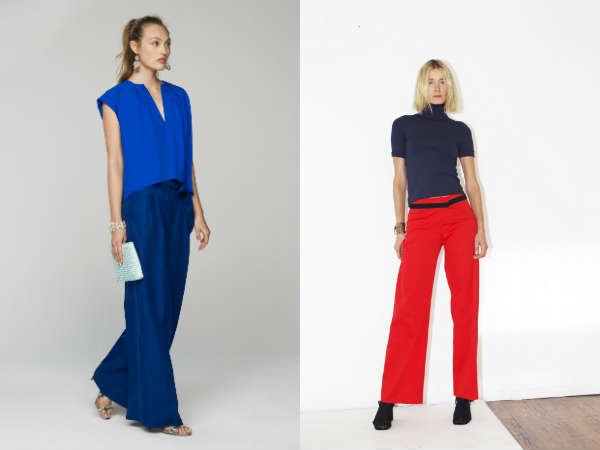
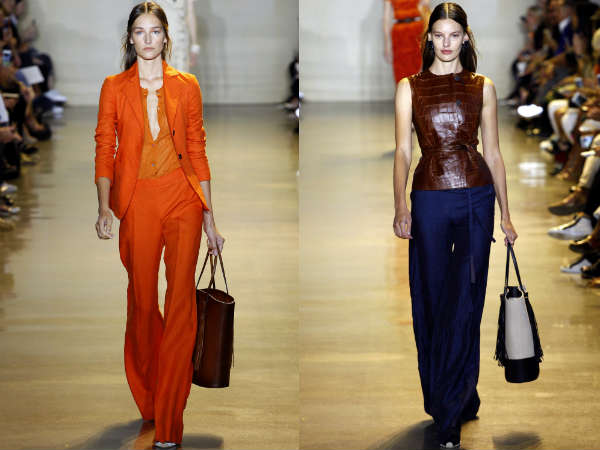
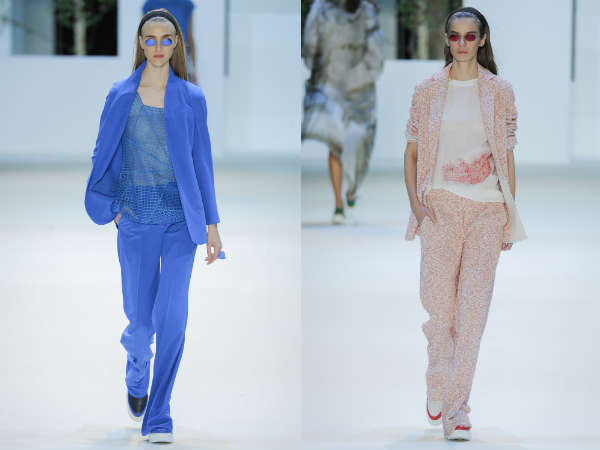
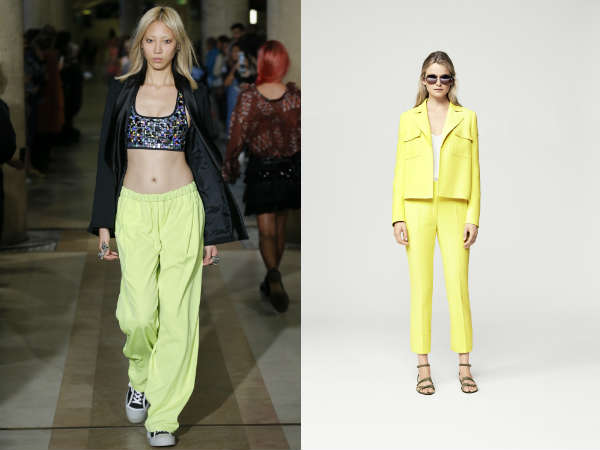
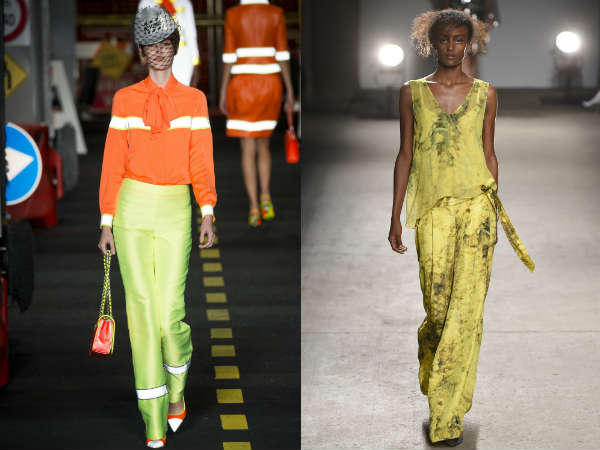


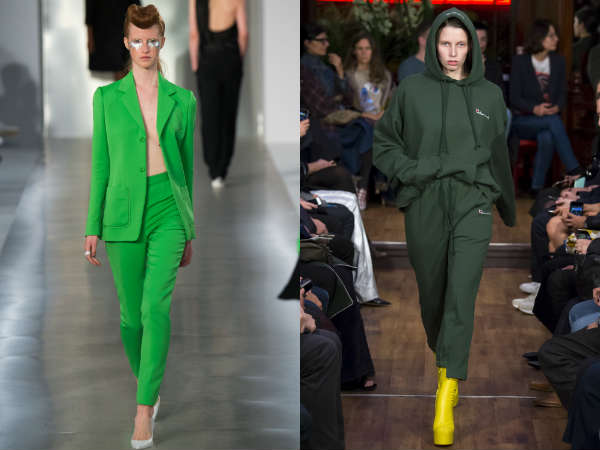
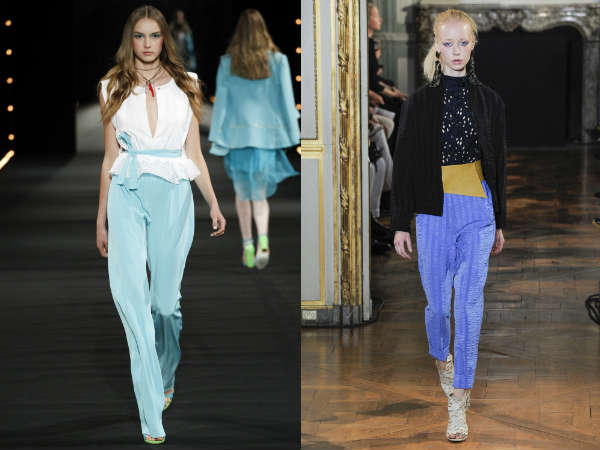




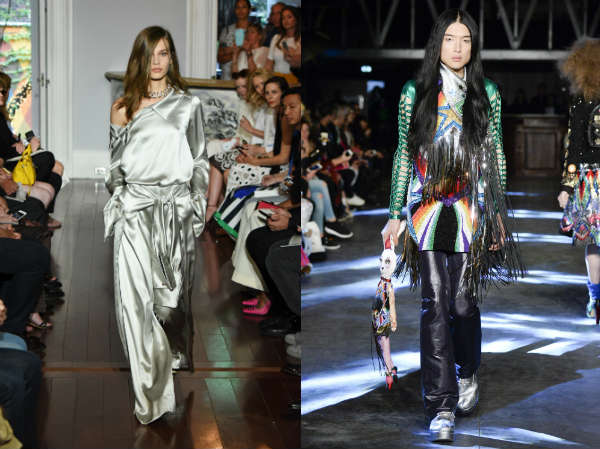

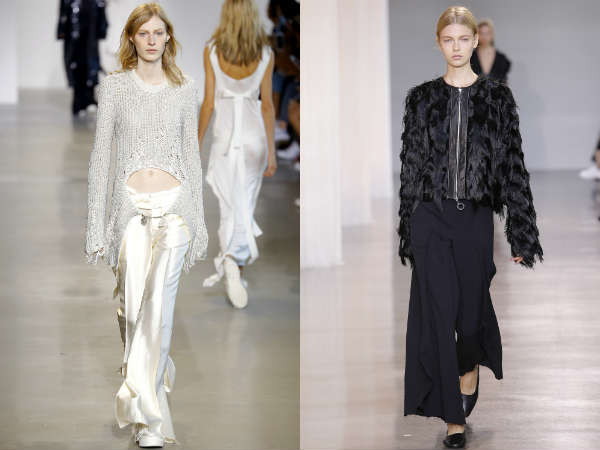
Having studied the new range of trousers offered to us by our favorite brands for the new warm season, it becomes obvious that the right to choose colors, models, lengths, materials and prints again remains with the woman. Choose, try and be stylish and irresistible with us!
The basic trouser pattern is the basis for any style, and this is the pattern you will need to model the model you like. To create such a pattern yourself, you need to take measurements, perform the necessary calculations and directly construct the drawing. The process is not complicated, but it requires certain knowledge and time. However, there is an easier option - download ready-made pattern real size.
Previously, we published skirt and dress patterns, and today we offer you to download a ready-made trouser pattern for 5 sizes - from 42 to 50! All that remains for you is to print the pattern, choose your size (or close to it), copy the pattern onto tracing paper and you can immediately proceed to modeling the style or sewing trousers according to the basic pattern - as you like.
How to determine your size
Take measurements from your figure and compare them with the measurements from Table 1. The main measurement for waist products is the hip circumference. When choosing the size of a trouser pattern, it is also important to take into account the Seat Height measurement. It is the seat height that determines the level of location (depth) of the middle seam. And if the seam depth is insufficient, the trousers will be “shallow” and vice versa.
The length of the trousers according to the pattern is about 104 cm. When modeling the style, the length should be reduced or increased.
Compare your measurements with the table and determine your trouser size. Then check the selected size as shown in fig. 2.

Rice. 1. Table of women's measurements
How to check a pattern
Sometimes when printing, due to printer settings, the pattern may be forcibly compressed. It is for this purpose that a “test square” with sides of 100 x 100 mm is applied to the pattern pieces. After printing the pattern, first measure the sides of the square and make sure that the pattern is printed correctly.
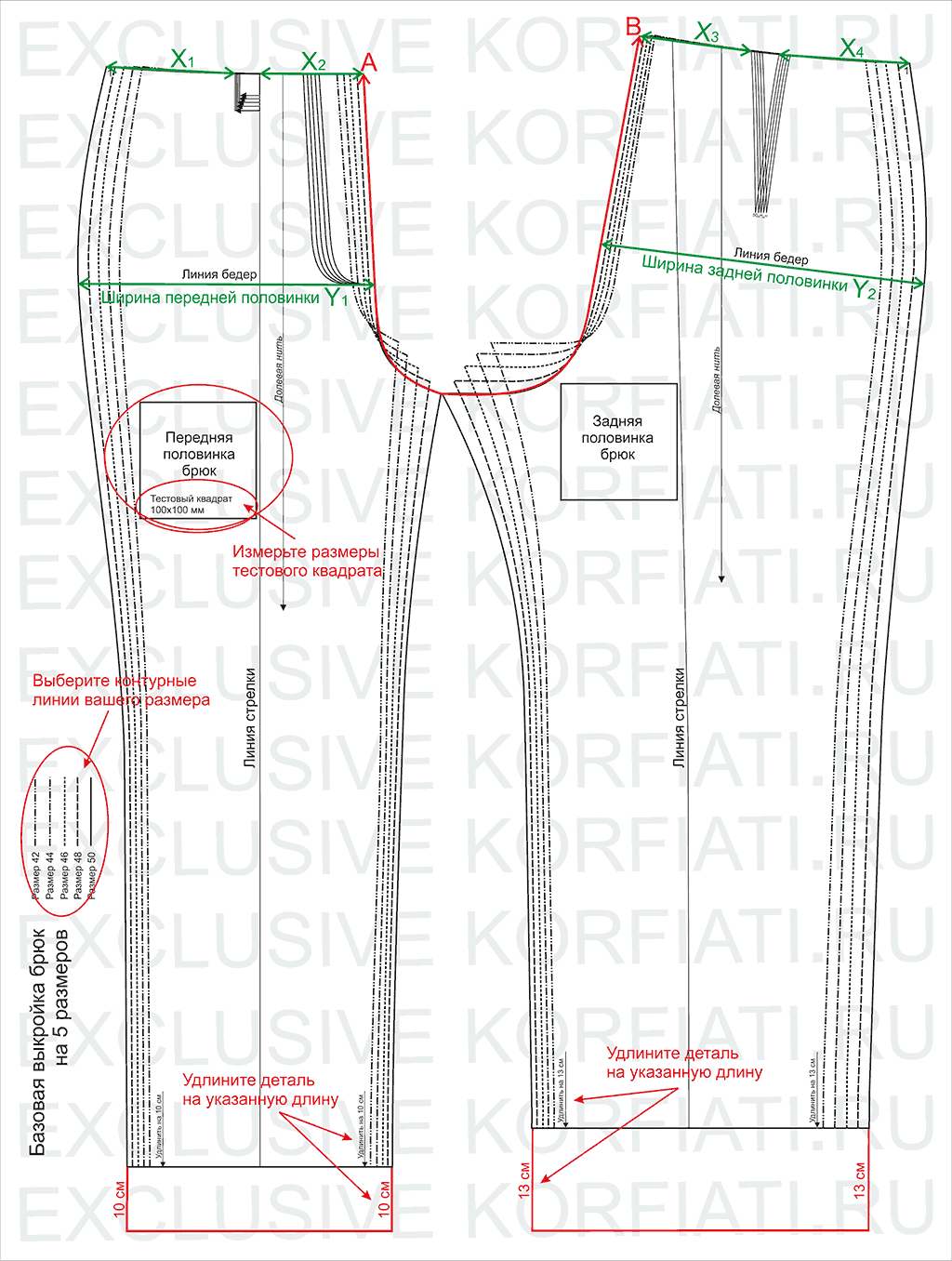
Rice. 2. Checking the downloaded pattern
To check the suitability of the size you have chosen (in Fig. 2, size 50), measure according to the pattern:
Waist: X=2(X1+X2+X3+X4),
Hip girth: Y=2(Y1+Y2),
Middle seam length: the distance between points A and B along the middle seam line.
Monitoring measured values
Compare the resulting X and Y values with your Waist and Hip measurements. The X and Y values should be 1-2 cm larger than the corresponding measurement.
Checking the length of the middle seam. Set aside the distance AB on a flexible measuring tape and pass a centimeter between your legs from the front waistline to the back waistline. Assess the level of tension of the measuring tape - it should not cut into the body, but fit loosely, giving freedom of movement.
Adjustment of waist and hip circumferences
What should you do if, when choosing a pattern, your size according to the hip circumference does not correspond to the waist circumference?
In this case, you need to adjust the waist circumference when drawing the pattern. This is very easy to do, based on the contour lines of the pattern. For example, if, according to your measurements, the hip circumference corresponds to size 46, and the waist circumference corresponds to size 44, when outlining the waist line, go to the contour line of the previous size 44 (Fig. 3).
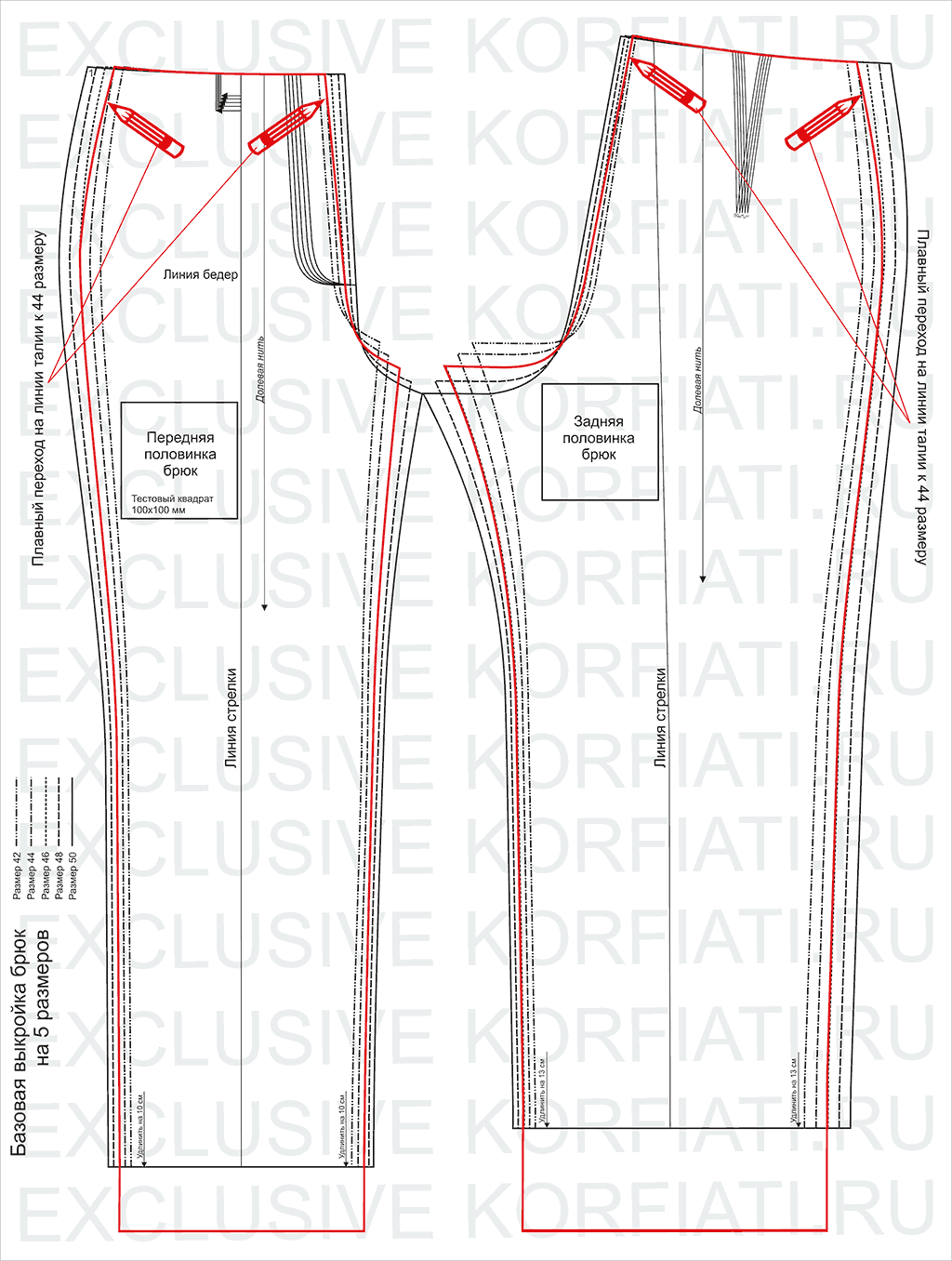
Rice. 3. Outlining the pattern
How to download and print the pattern
The pattern comes in 5 full-size sizes. To download the pattern, simply click on the button below. Print the pattern on a printer in full size(730*1000 mm) - it is better to do this in a copy center.
The pattern can be downloaded in A4 format divided into sheets (do not adjust when printing and print as is). Please note that this type of printing and gluing may result in distortion of the pattern dimensions, be sure to check the key measurements as described above.
We wish you admiring glances and new creative ideas!
These adorable tapered trousers are the perfect fashionable combo partner to any top or jacket! You simply can’t do without these trousers for spring! Cropped and tapered at the bottom, the trousers perfectly slim the hips due to soft pleats and at the same time allow you to show off beautiful sandals! Combine these trousers with short jacket, matching the tone - and a spectacular spring look is ready!
Pattern of tapered trousers - details

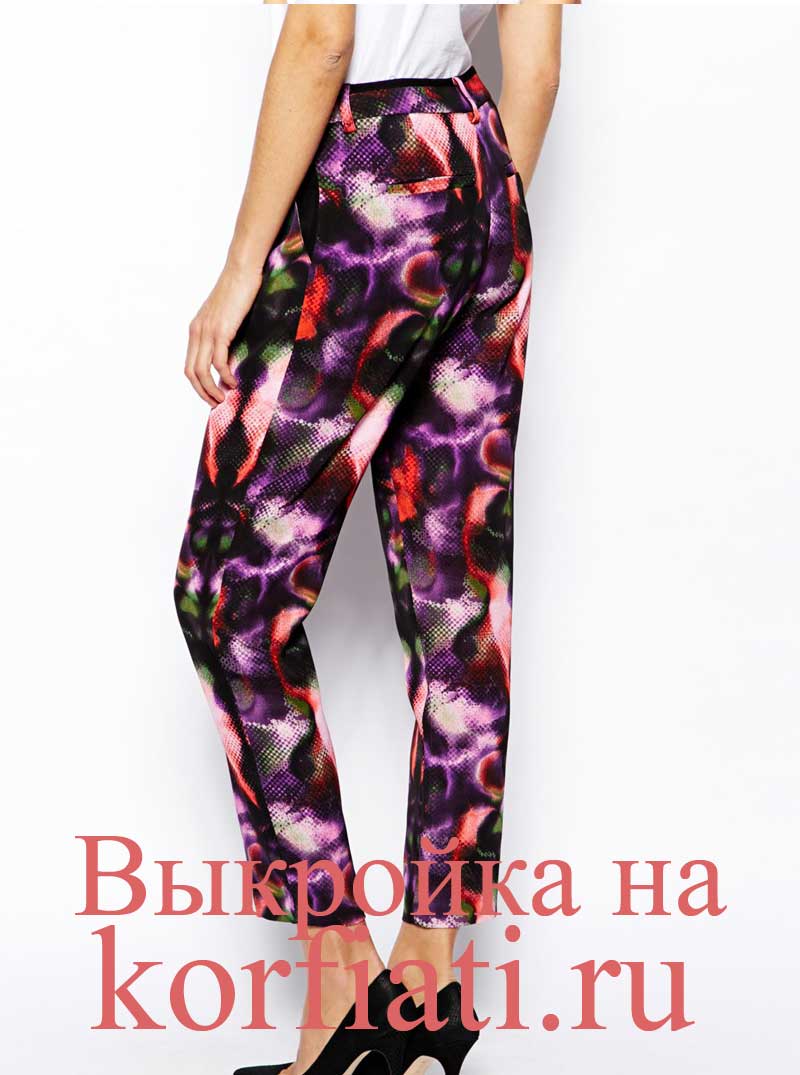
Rice. 1-2: Pattern for tapered trousers - front and back views
Pattern of tapered trousers - modeling

Rice. 3. Pattern of tapered trousers - modeling the front and back halves

Rice. 4. Pattern of tapered trousers - cut details
The pattern of tapered trousers is modeled after. The length from the waist is about 100 cm, the width of the legs at the bottom is 29 cm.
On the base pattern of women's trousers, draw modeling lines as shown in Fig. 3. Pattern of tapered trousers - modeling the front and back halves.
IMPORTANT! The waist line of the trousers is slightly lowered, so before you start modeling the trousers, set aside 2 cm from the waist line (on the front and back halves of the trouser base pattern), draw a new low waist line, and cut along the line.
Modeling the front half of tapered trousers
Draw the pocket entry line, leaving 4 cm along the waist line to the right and 14 cm down, and the pocket burlap. Move the dart into a fold. Make an increase for a one-piece valance 3-4 cm wide and about 14 cm long (for attaching a zipper).
Taper the trousers at the bottom to 14 cm, and shorten them to your measurements (the length of the trousers depends on your height).
The second fold requires additional volume. To do this, cut the pattern along the arrow line and spread it 4 cm - you get a second fold and additional volume on the hips.
Modeling the back half of tapered trousers
Taper the back half of the trousers to 15 cm and shorten them. The width of the back leg at the bottom should be 1-2 cm greater than the width of the front leg at the bottom.
Draw pocket entry lines 15 cm wide and 1.5 cm high.
Pattern of tapered trousers - cutting
In Fig. 4. details of the cut of tapered trousers are presented. Please note that the cut-off barrel, one-piece with burlap pocket, is cut from plain black fabric.
Fabric consumption for trousers is 1.4-1.5 m with a width of 145 cm.
From the main fabric, cut out:
Front half of trousers – 2 parts
Back half of trousers – 2 parts
The belt of the front half of the trousers is 4 parts, 8 cm wide (5 cm in finished form) and the length along the waist section of the front half, taking into account the entry into the fastener.
The waistband of the back half of the trousers is 4 parts, 8 cm wide (5 cm in finished form) and the length along the waist section of the back half, excluding the dart.
Side pocket burlap – 2 pieces
Back pocket burlap – 4 pieces 18 cm wide and 20 cm long
Back pocket facing – 2 pieces 5 cm wide and 18 cm long
From plain black fabric, cut out:
Cut-off barrel, one-piece with burlap – 2 parts
Seam allowances – 1.5 cm, at the bottom of the trousers – 2 cm.
How to sew tapered trousers
Do this on the front halves of the trousers. Do this on the back halves of the trousers.
Place folds on the front halves in the direction indicated by the arrows.
Baste and stitch the side and step seams, the middle seam, leaving an open area for sewing the zipper. Front.
External details of the belt. Sew the reinforced and unreinforced parts of the belt together along the side seams and the middle seam of the back at an angle (in order for the belt to fit tightly around the waist, the connecting seams should be laid so that the belt along the upper cut is narrower than along the bottom, so each seam should be laid at 0 .5 cm to the left to the top of the intended line). Cut off seam allowances and iron.
Sew the outer reinforced part of the belt into the trousers, aligning along the side seams, place the unreinforced part of the belt face to face on the stitched part, stitch along the top allowance and short allowances, turn it over, sweep cleanly, tuck open allowances and baste. Sew along the edge of the belt and attach belt loops according to the markings.
Fold and stitch the bottom seam allowance of the trousers.
Your tapered trousers are ready, wear them with pleasure!
Don’t rush to leave the page thinking that you already know how to make a trouser pattern! Why? I'll explain now…
How many steps do you need to take to get a pattern, right?
That is why I went searching on the Internet and came across a surprisingly simple, but at the same time accurate Italian method.
Construction of the trouser base pattern (description)
In this article we will look at constructing a basic pattern for straight women's trousers using the Italian method. Its main difference from other methods is that the side seam of the product is shifted to the center of the back panel by 1 cm.
The main advantage of basic patterns, as a rule, is the ability to use them as a basis for modeling trousers, shorts, breeches, etc. The advantages of the Italian cut are obvious for women with a large back curve. Due to their design, the trousers have an ideal fit in the waist and hip area.
Initial data
So, to create a pattern, we need initial data - measurements. It is advisable to have someone help you measure them. Please note that all measurements are taken in underwear and recorded in the table.
Important: the initial data was taken as measurements of size 50 for women according to the Italian cutting system.
For other sizes, see Standard measurements used in the Italian cutting system
Measurement Designation Value
Waist circumference FROM 84
Hip circumference OB 110
Thigh height WB 20.5
Seat height BC 28
Knee height VK 60.5
Knee circumference OK 26
Pants length DI 106
Note: Wb is measured from the waist line to the horizontal line drawn along the most protruding points of the buttocks; Sun is measured in a sitting position - the distance from the bottom edge of the tape at the waist to the plane of the chair; VK in in this case measured along the side from the waist to the middle of the kneecap.
When constructing a basic trouser pattern, we take the necessary allowances for a loose fit:
Increase Designation Value (CM)
Increase in waist size Pr.T 1
Increase in hips Pr.B 2
When modeling, the increases can be changed within the following limits: for Pt from 0 to 1.5 cm, for Pb from 0.5 to 4 cm. The degree of fit of the product depends on the increases.
Constructing a trouser pattern
(Fig. 1) So, we recommend constructing the pattern drawing on graph paper (it is sold in rolls up to 1 m wide) or in special programs for making patterns, such as RedCafe. (the favorite program of engineers, Autocad, is also suitable)
Let's start by building the front panel of the trousers. In the upper right corner we put point A. Next, from t.A down we put two measurements: Bb - put t.B and Sun - put t.S. 
(Fig. 2) From point B to the left we lay a segment equal to ¼ (OB + Pr.b) - point B1 and to the right 0.5 cm - point B2 
(Fig. 3) From t.C to the left we put the value of the segment BB1, put t.C1 and to the right - a segment equal to 1/20 OB - t.C2 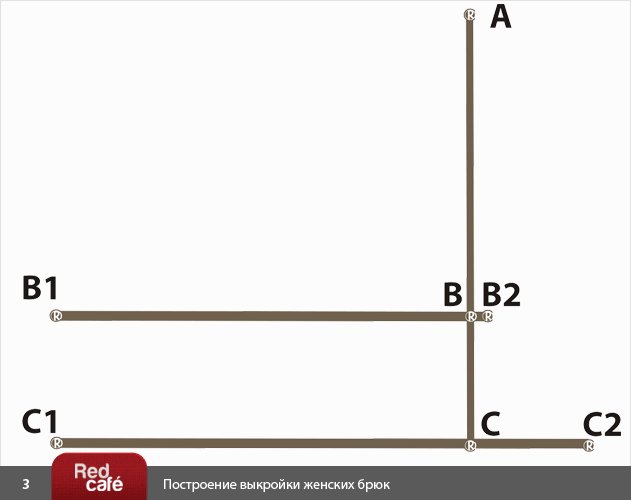
(Fig. 4) We connect points C2, B2 and A with a smooth line, we get the middle seam. 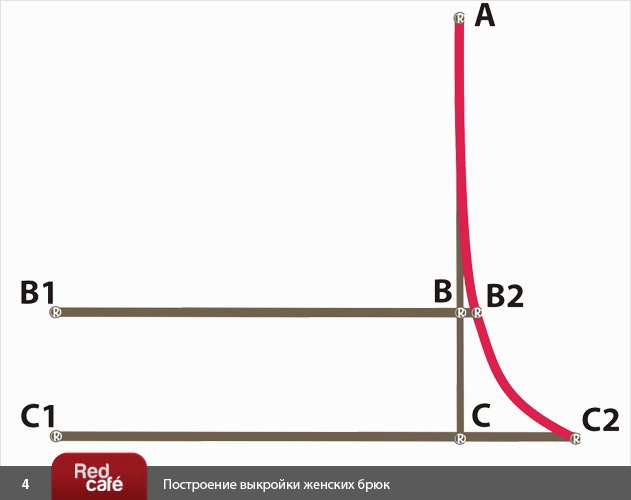
(Fig. 5) We return to point A. To the left we set aside ¼OT+3cm, put t.A1. Up from t.A1 we put 1 cm and put t.A2. 
(Fig. 6) Using a pattern, we connect points A2, B1, C1. If you don’t have a pattern at hand, draw a smooth line. 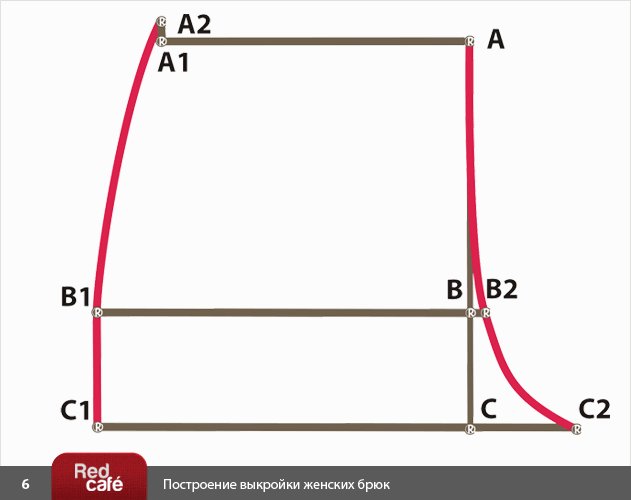
(Fig. 7) Find the middle of the segment C1C2, set t.D. We draw a perpendicular to line C1C2 and at the intersection with line AA1 we set i.e. 
(Fig. 8) From t.E down we put two measurements: Bk - set t.D1 and Lengthbr - t.F. 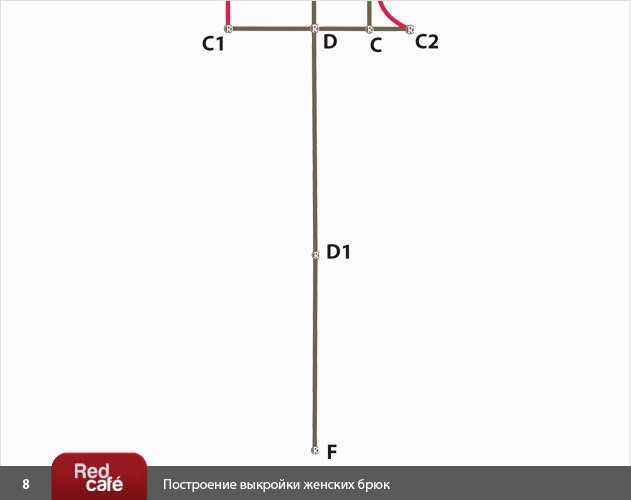
(Fig. 9) From point D1 we lay equal segments to the right and left and put points D2 and D3. The segment D2D3 will be equal to the measure 1/2Ok. 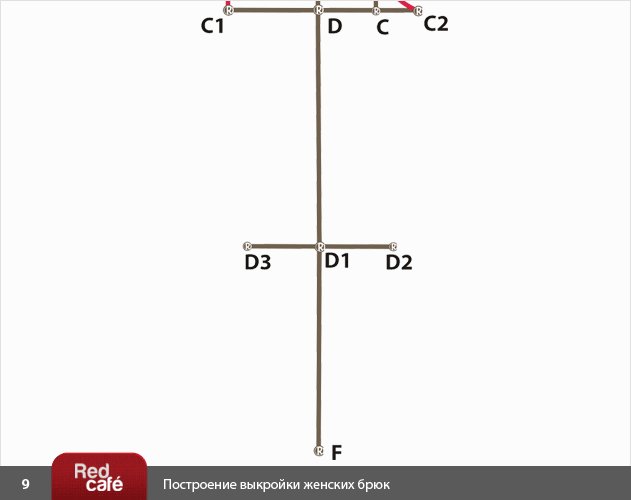
(Fig. 10) We take the bottom of the trouser pattern equal to the segment D2D3, put points F2 and F1, where point F is the middle of the segment F2F1. 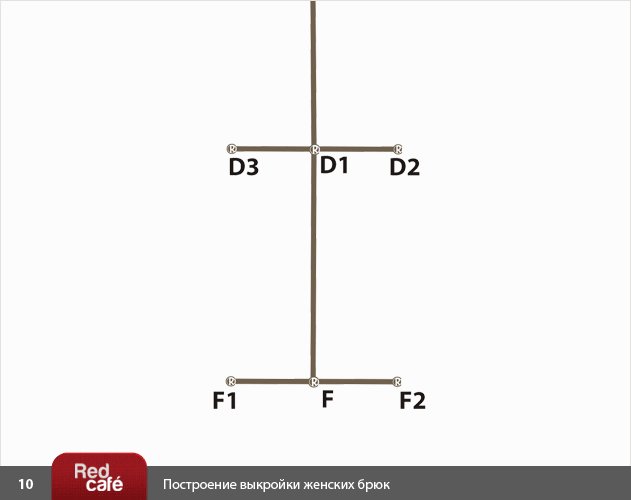
(Fig. 11) Connect points C2, D2, F2 and get an internal seam. We connect points C1, D3, F1 and get an external seam. Segment DD1F is the midpoint. 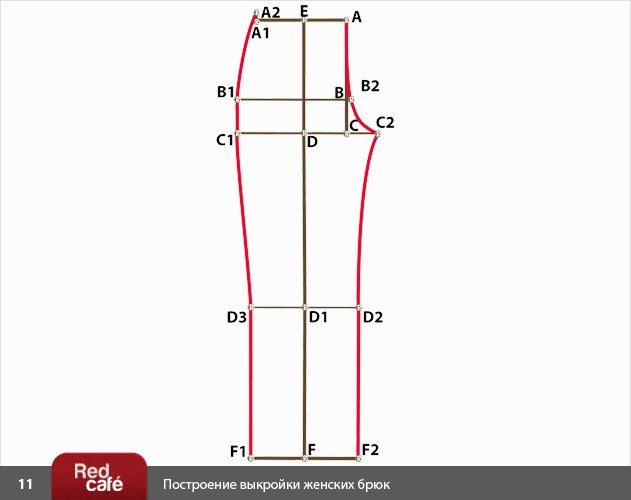
(Fig. 12) Next we build the front dart. We put 1 cm on both sides of i.e. and down 10 cm, put points E3, E2, E1 and connect them. 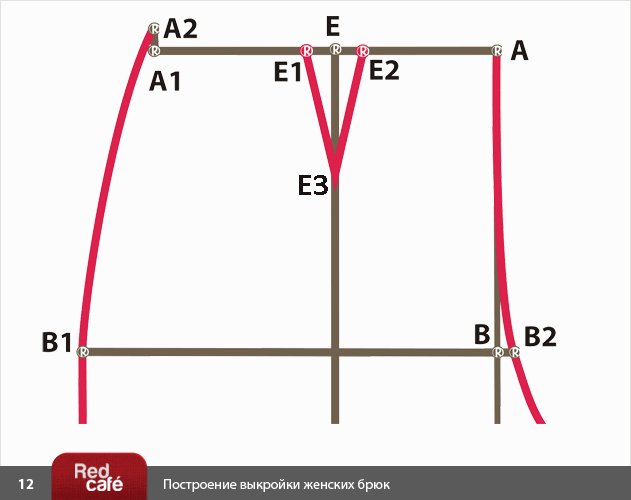
(Fig. 13) Using a pattern we connect the points of the upper cut AE2 and A2E1. 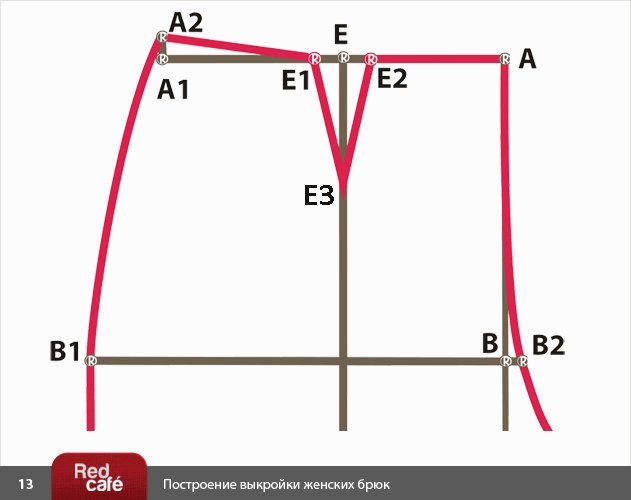
(Fig. 14) The pattern for the front of the trousers is ready. Let's move on to the back part.
Construction of the back part of the trouser pattern:
We carry out the construction on a ready-made drawing. We recommend picking up a colored pencil so you don't get lost in the lines. Let's start again with T.A. To the left of it we put aside a segment equal to ½ AU+2cm and put so.N. Draw a perpendicular up 2 cm from point H and place point H1. 
(Fig. 15) To the left of t.C we put aside a segment equal to 1/24 (1/2OB), put t.C3 and connect it with a straight line to t.H1. 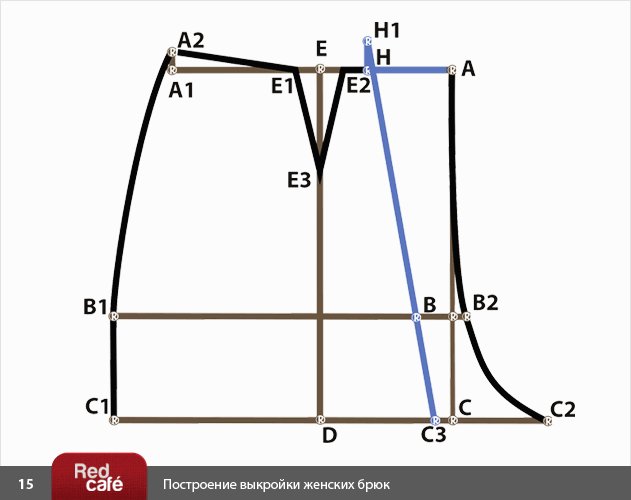
(Fig. 16) From point C3 we lay off a segment to the right equal to 1/10 About - point C4. 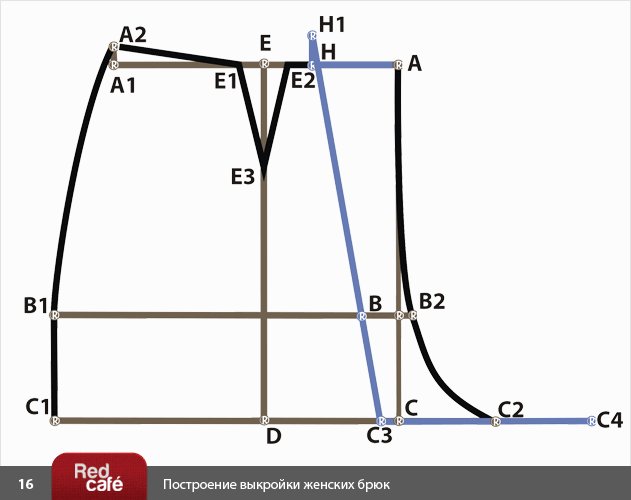
(Fig. 17) Extend line AA1 from t.H to the left by ¼ From - 1 cm (this is the Italian offset of the side seam) + 2 cm (on the dart) and place t.H2. From it we draw a perpendicular up 1 cm and place point H3, which we connect to point H1. 
(Fig. 18) We enter reference point L, which is the intersection point of segments B1B2 and H1C3. 
(Fig. 19) From t.L to the left we draw a segment equal to ¼OB and place t.L1.
We use a pattern to connect points H3, L1 - we get an external seam. We connect points L, C4 - we get the middle seam. 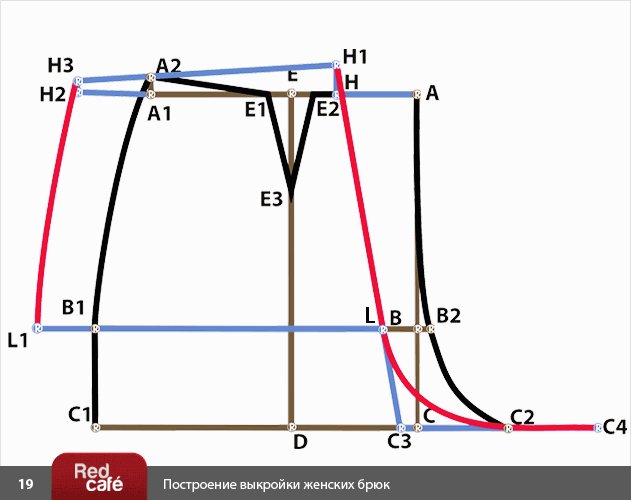
(Fig. 20) The construction of the knee line and the bottom line on the pattern of the back part occurs as follows: from points D2, D3, F1, F2 in the direction of increase we put aside 1.5 cm and put points G, G1, F3, F4. Connecting smooth lines points L1,G,F3 and points C4,G1,F4. We get the inner and outer seams.
(Fig. 21) The dart on the back half of the trousers is built on line H1H3. t.M is the middle of this line. We put 1 cm from T.M on both sides and down parallel to line H1L 14 cm, we get points M1, M2 and N. 
(Fig. 22) Now the main thing is to check the pattern. The length on both seams (inner and outer) on the front and back panels should be the same. To do this, remove the pattern of the front part of the trousers onto tracing paper and place it on the pattern of the back part of the trousers, matching the edges of the internal seams. Next, we move the pattern until the line of the middle seam is aligned, and the back seam can be longer than the front. Then we follow the same principle, matching the edges of the outer seams and moving the pattern until the side points of the waist coincide.
Congratulations! The pattern of women's trousers is ready! 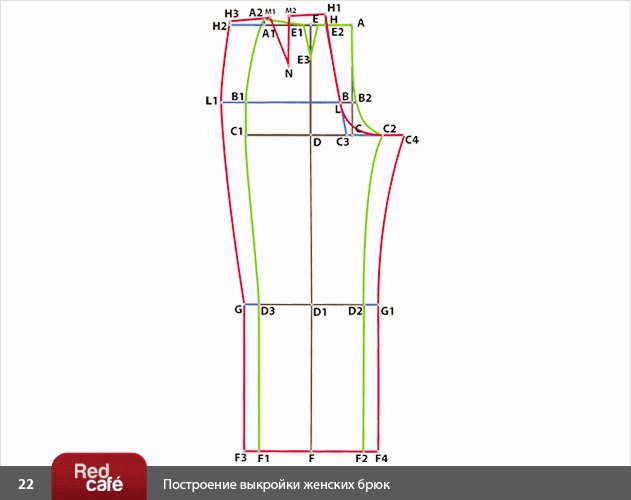
BASIS OF PANTS PATTERNS. Video master class!
It will be built in two stages, and will look something like this when finished: 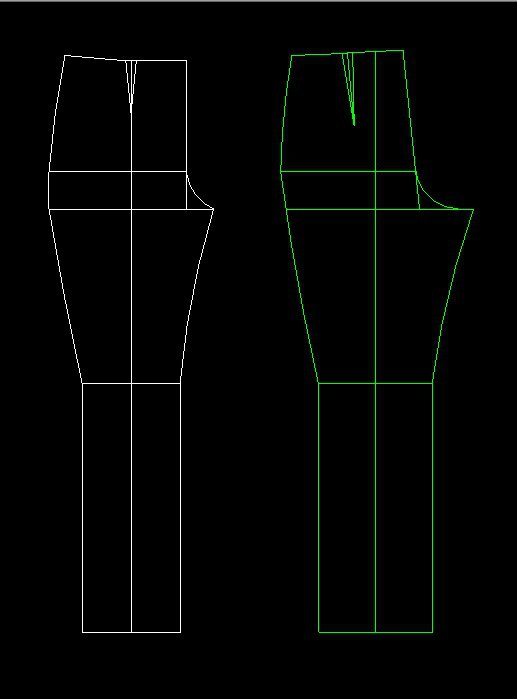
Front half - how to make a pattern video.




